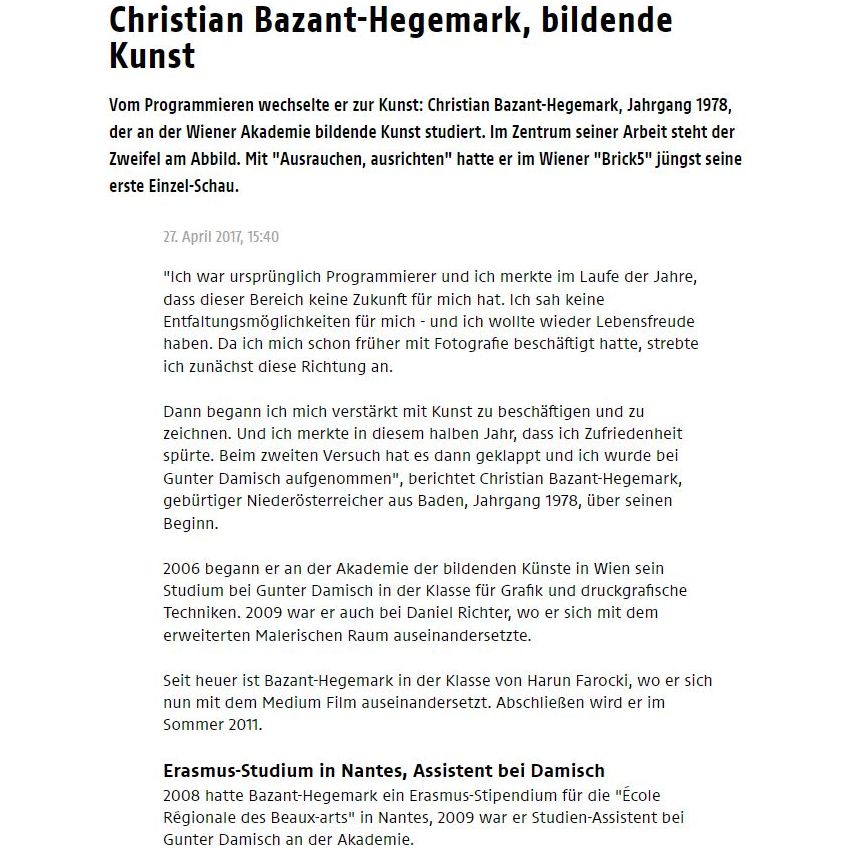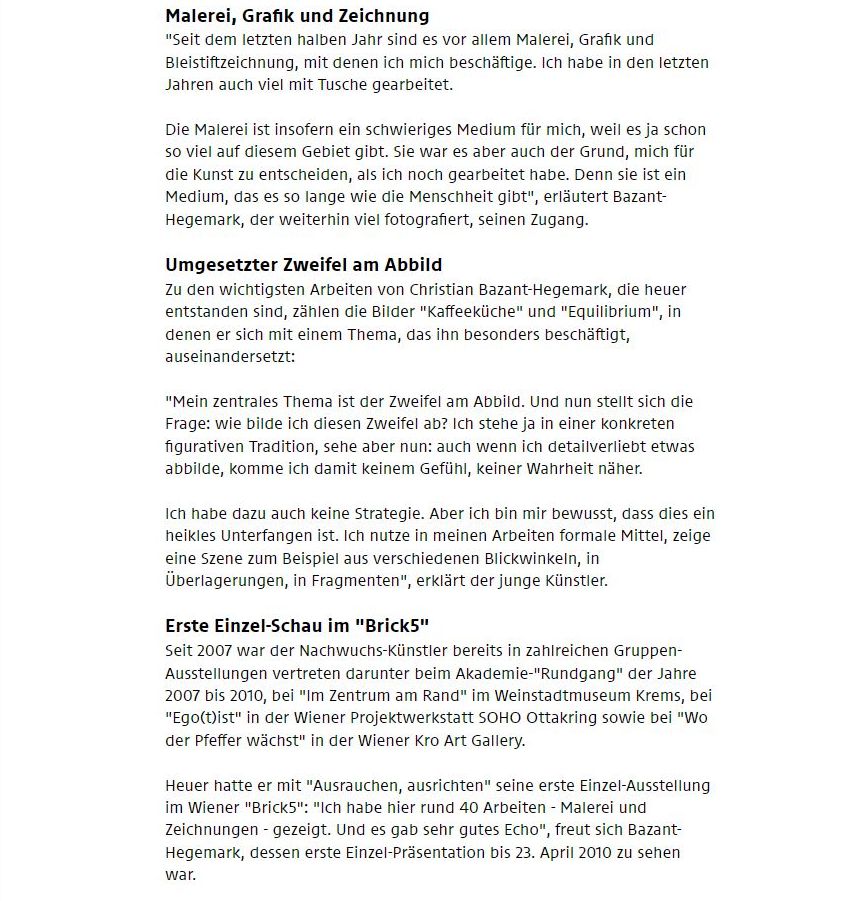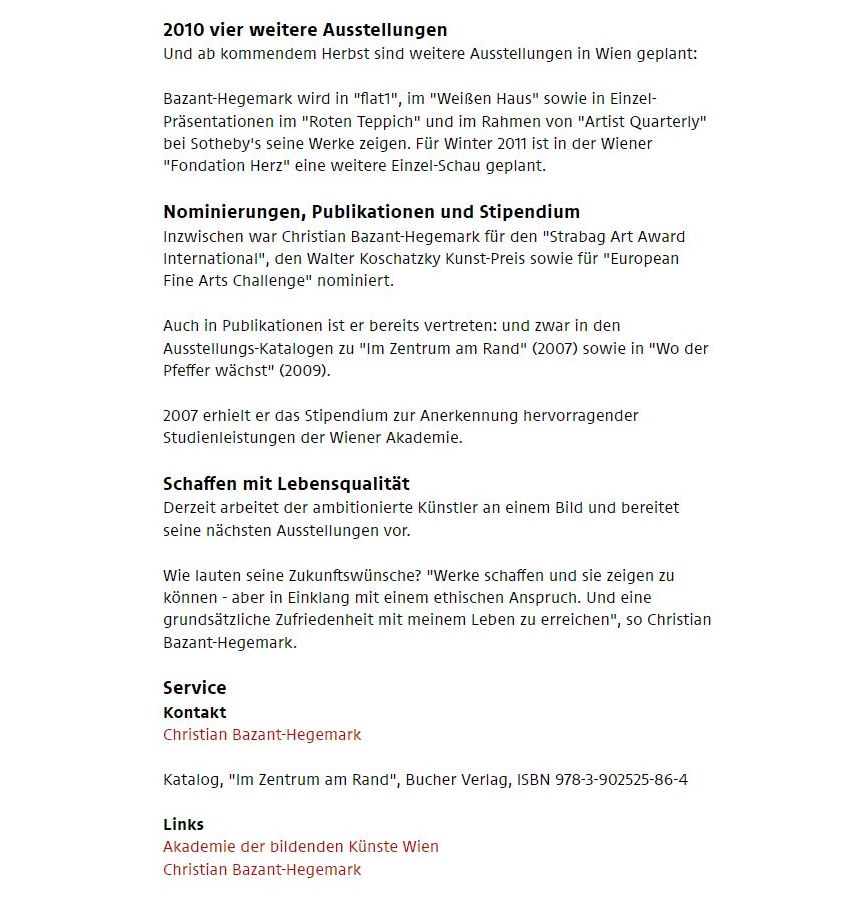In der Frühlingsausgabe von Aurum Magbook ist dieser Artikel zu meiner Arbeit.
Danke an Lucian Antoni (gallery twenty-six), Reinhard Neussner und Elisabeth Muth für das Ermöglichen dieser Sichtbarkeit! <3
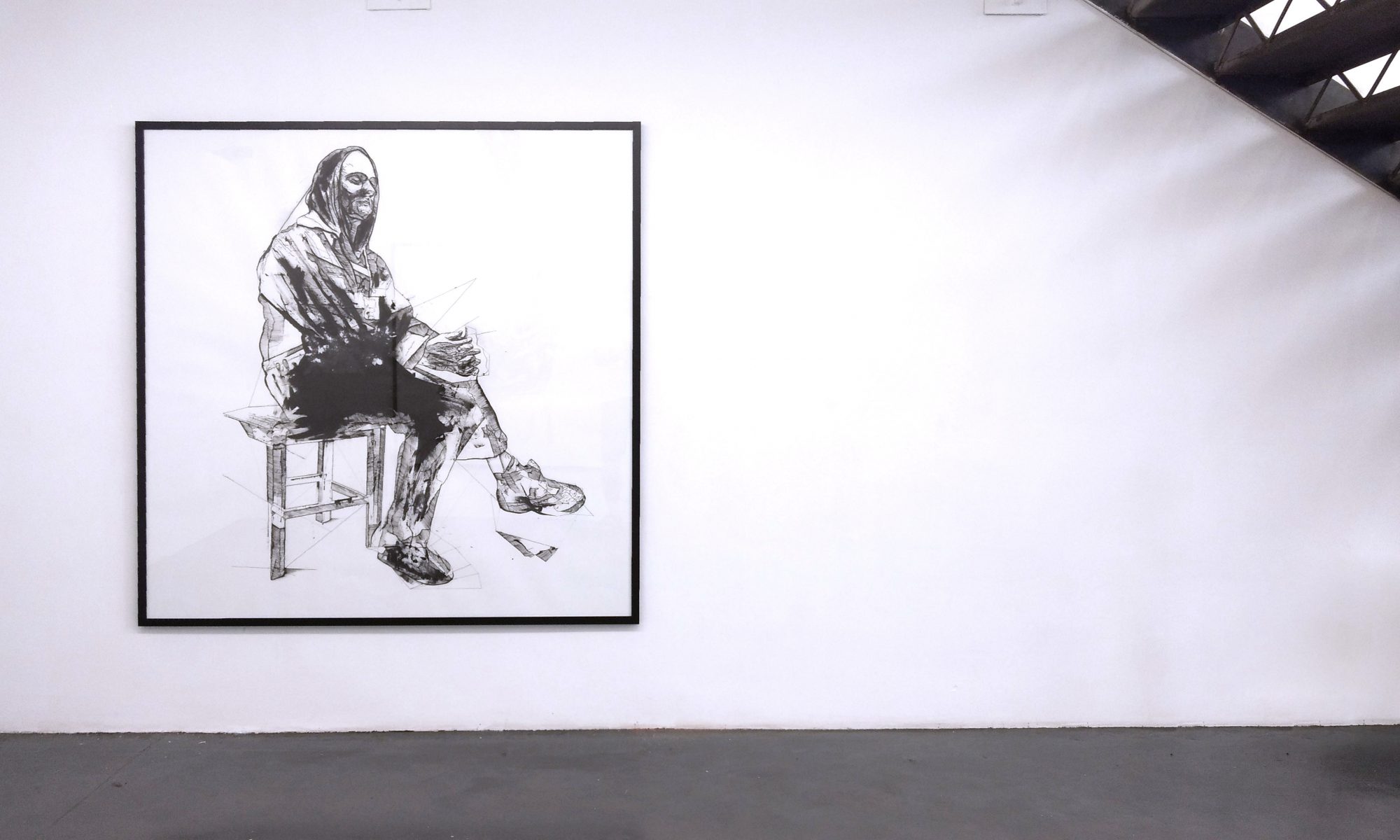
Painting human conditions.
In der Frühlingsausgabe von Aurum Magbook ist dieser Artikel zu meiner Arbeit.
Danke an Lucian Antoni (gallery twenty-six), Reinhard Neussner und Elisabeth Muth für das Ermöglichen dieser Sichtbarkeit! <3
Tina Perisutti hat für die Kleine Zeitung über meine Ausstellung “Consciousness Dialogues” bei [FKc] FORUM KUNST contemporary geschrieben:
Danke Tina!
Im Dialog zwischen Menschsein und Form
Wenn das spätsommerliche Licht die offenen Räume des Forum Kunst Contemporary im Stift Millstatt durchdringt, bekommen die schwebenden Menschen in Christian Bazant-Hegemarks Großformaten eine eigene Magie. Losgelöst von der Schwere des irdischen Lebens, scheinen hier ein Mann und eine Frau, späteren Alters nackt in nicht idealtypischen Körpern und sich zart an den Händen haltend, die Leichtigkeit des bloßen Seins zu erleben. Erinnert es an eine religiöse Darstellung einer Himmelfahrt, so impliziert es zudem einen psychologischen Moment der Befreiung.
Der Künstler zeigt Personen in ihrem (möglichen) Umfeld und beleuchtet mehrschichtig die Frage, was es bedeutet, Mensch zu sein. So ist in einem weiteren Bild eine Frau erst auf den zweiten Blick auf dem Balkon auszumachen, denn im Vordergrund stehen ein Teil eines Zimmers mit Balkontüren. Die Ästhetik erinnert an den amerikanischen Realisten Edward Hopper und lässt im mehrfachen Sinn viel Raum für eigene Assoziationen.
(Tina Perisutti, August 2024)
This summer, once more, Jan Söhlke made a portrait of me: sitting in the studio, in front of a blank canvas. Colorful yet paused.
Check out more of Jan’s sensitive portraits on his website or his Instagram — and check out further photo portraits he did of me.
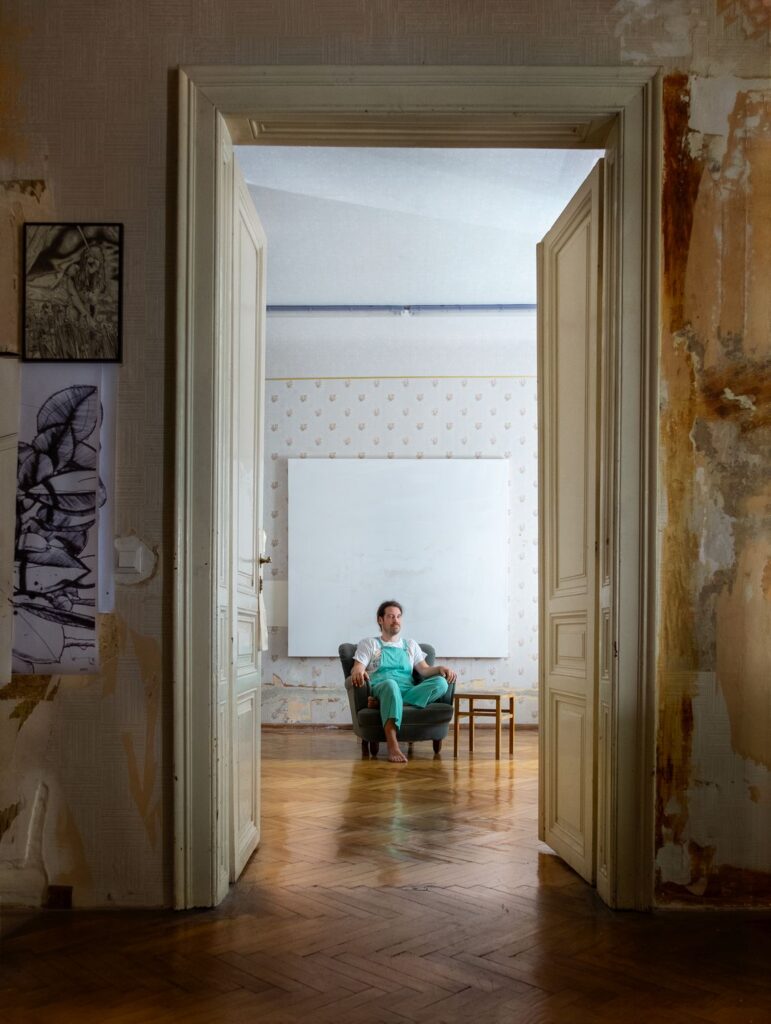
I was visited by Athanasios Baxopoulos (kindly introduced by Natalie Sandner), who made a set of beautiful digital and analog portrait photos of yours truly. Here’s a selection of them — all images (c) A. Baxopoulos.
Thank you Athanasios for your visit, and for capturing these moments..
Marcus Schober (director of Wiener Bildungsakademie) visited and interviewed me — we talked about all sorts of topics: how to capture moments, how to depict the everyday realities of trauma survivors; how to build bridges between communities, and how to trust your gut — enjoy this conversation.
Thanks to Elisabeth Kaiser and her team for organizing and realizing this! <3
Claudia Aigner wrote about my exhibition “Muted Rainbow” at gallery twenty-six, for Wiener Zeitung (online and print).
Full article here.
I was asked to talk about art and life, with Emily Tolman. The conversation has been published on Spotify and YouTube.
From the show notes: “Meet Christian Bazant-Hegemark, a painter, game developer, lecturer and more. On this episode of TIP, we talk about some of the flaws of art school. What it teaches us and how that differs from what we actually need to be taught in order to navigate the art world. We talk about schedules, being your own manager, networking and much more. Stick till the end to get some TIPs for artists!“
An excerpt from around 29:00: “I’m not sure whether I can think of a ‘biggest’ frustration (about the art market) right away — but I think maybe one challenge is that .. people start making art for very idealistic or maybe also egoistic reasons. It’s about expressing yourself, learning a complex language or craft; I don’t think that many people start making art because they want to make money.
So then you develop your competencies and you get better at what you do — and it often feels very linear: you get better you get better. And you also understand more about art history, because you also dive into it, you want to understand the system that you are in; and then you understand that what you do cannot so easily be a linear story, because others pursue entirely different stories or aesthetics or contexts.
And so already this shows each of us who make art, that this can be a very complex and long journey. And none of this is related to economic aspects. It’s really just this very beautiful, or maybe very overwhelming, approach to living a life.
And then, all of a sudden, this doesn’t work. Because of course you need some means to live a life, economically. I don’t know why the ideal very often is to make art full time, because that would mean.. already from the word, it sounds like a full time job; but of course in a full time employment situation you automatically get money — the only thing you need to do is to show up, and not mess things up. And with art, you can show up, and make amazing work, and you don’t get a single Euro or Dollar or anything. What does this mean?“
Check out .lab on Instagram
Katharina Gossow made the photos that accompanied Nicole Scheyerer’s text about me for Falter. Here are some additional shots that were not published in the article.
(all photos (c) Katharina Gossow)
The Austrian magazine Wienerin published the following interview with Jaqueline Scheiber (@minusgold) and me, about mental health (link).
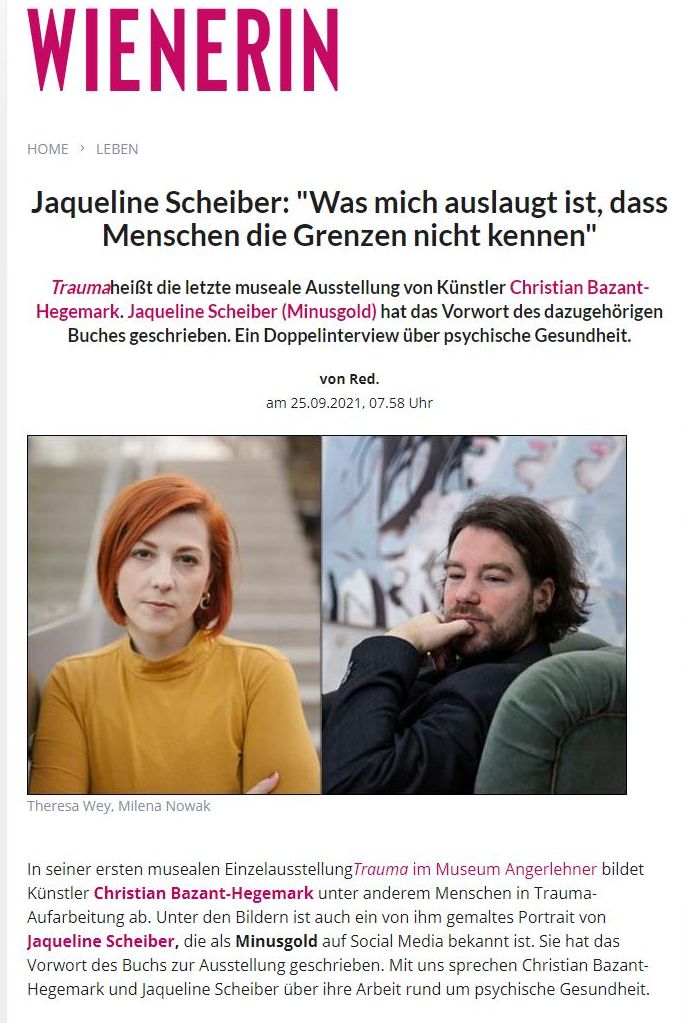
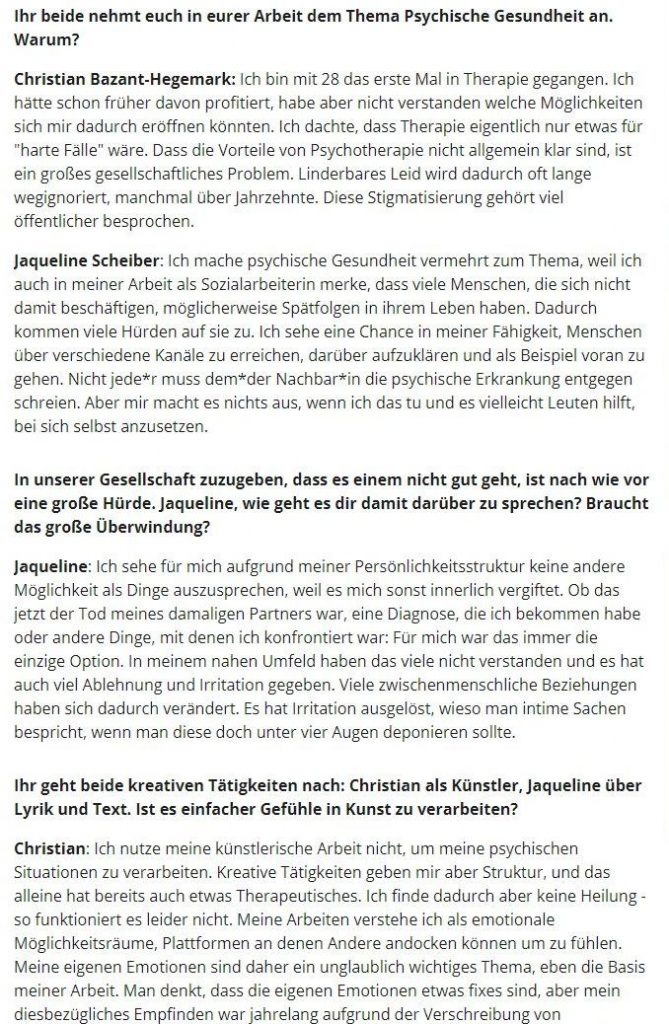
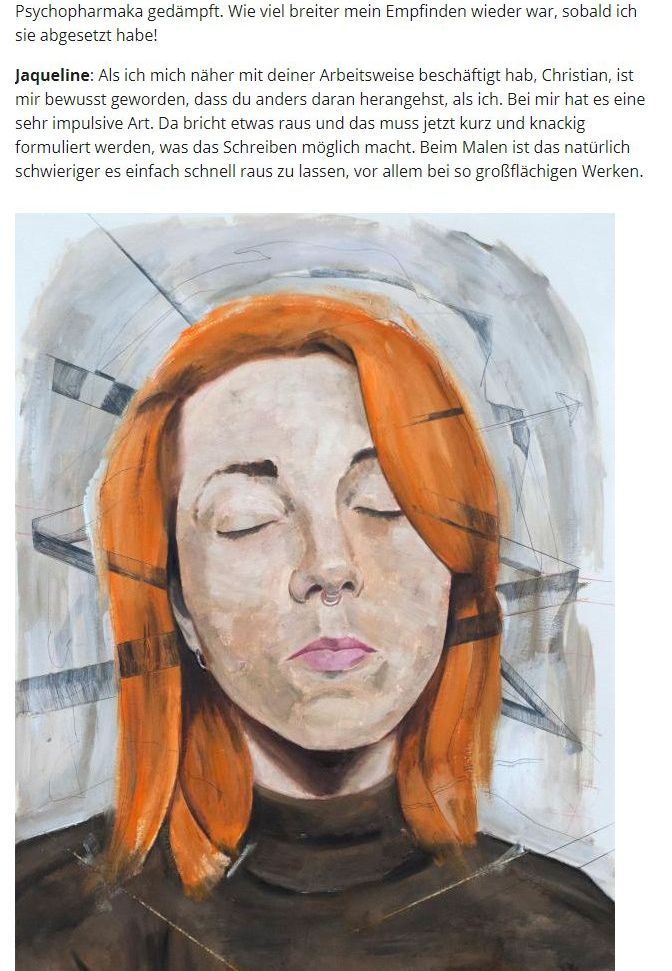
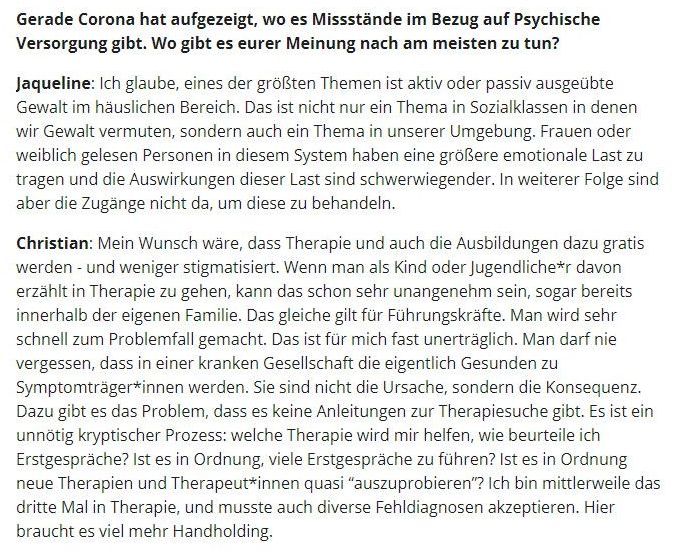
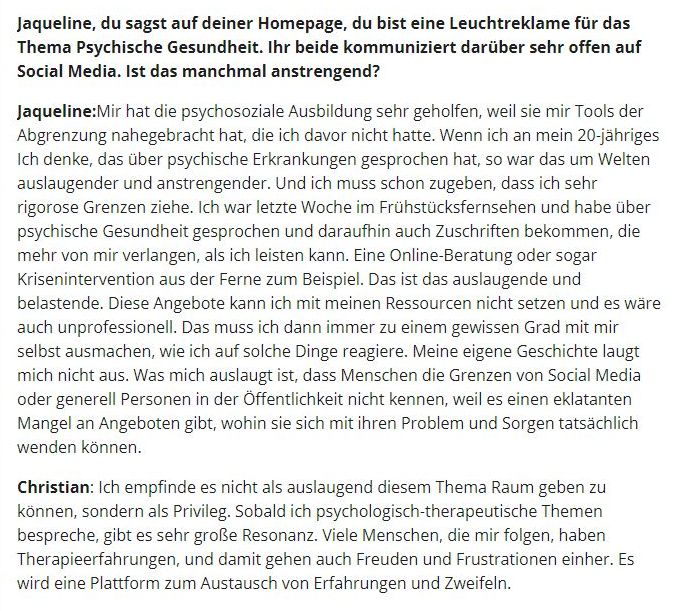
My pixelations were featured on www.retronator.com, the website of Matej ‘Retro’ Jan. Here’s the link to the original content.
You can find more of my pixel-based work here.
Christine Keruth is one of these rare painters that manage to pull of conceptualizing and realizing a PhD thesis. She researched on Pietá motives in contemporary art. You can read more about it here.
Christine: thanks for noticing and taking interest in my work! <3
Everyone else: check out Christines painting universe, it’s mesmerizing!
My hometown’s local newspaper “Badener Zeitung” published this snippet about the Trauma exhibition at Museum Angerlehner.
Museum Angerlehner produced this 13min video of curator Günther Oberhollenzer and me discussing the exhibition concept.
The video is in German, but lets you enable auto-translated subtitles in many many languages.
Enjoy! <3
In 2020 I started JOMO – Joy of Missing Out together with Julia Bugram and Paula Marschalek. We do monthly public conversation with experts of the fine arts field, with a focus on topics that aren’t often discussed: why coaching can help artists, how to set up an art fair, how to establish a life long art practice, etc.
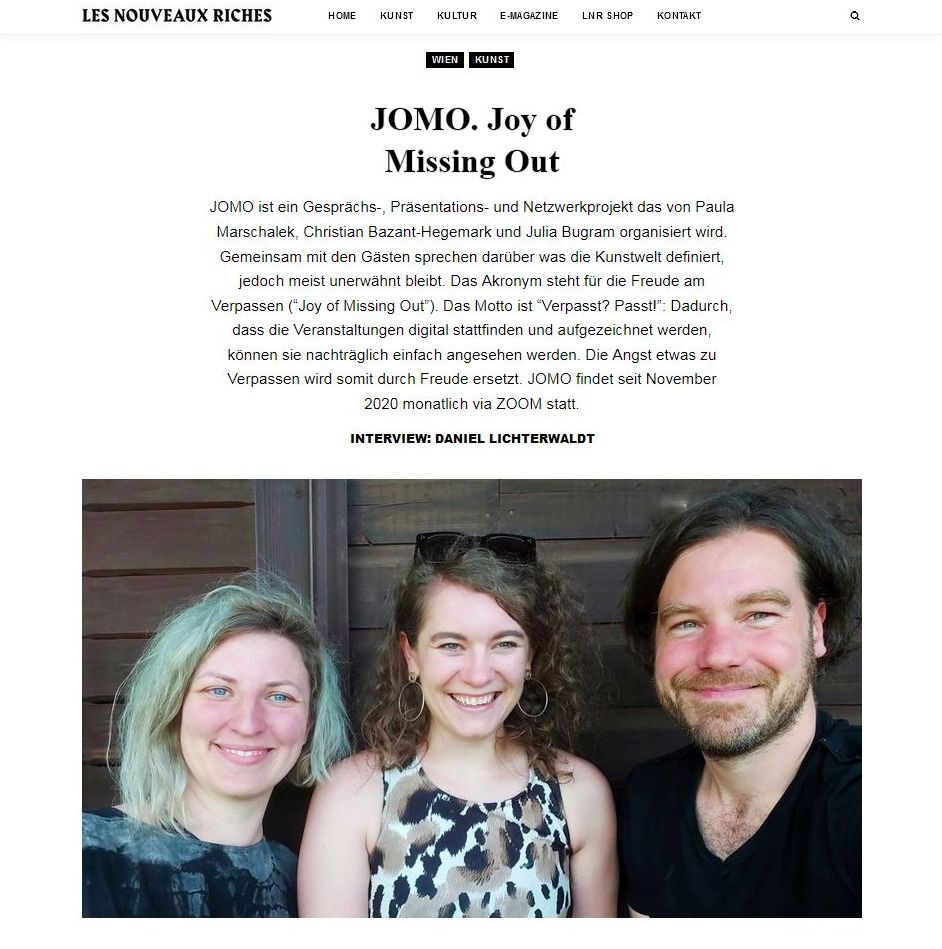

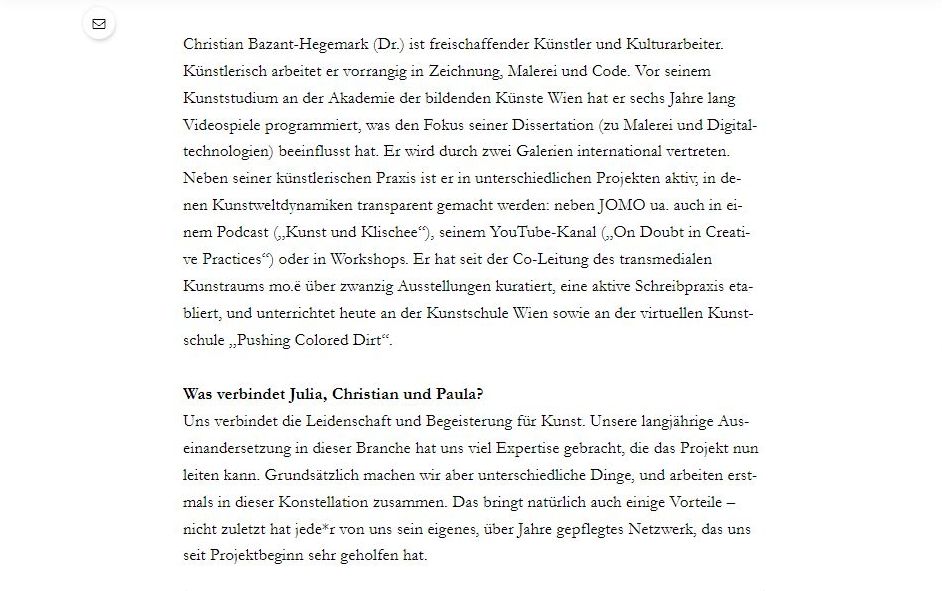

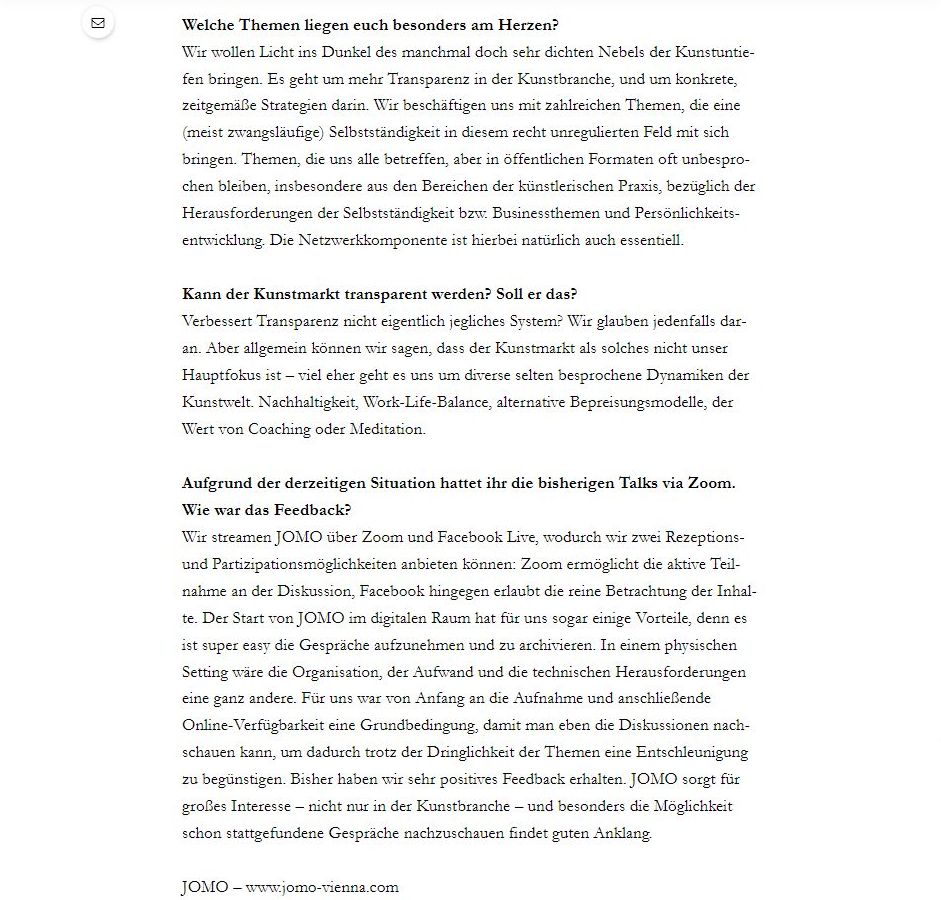
Isabella Minniberger produced this short segment for ORF, about my solo exhibition at Museum Angerlehner.
Teresa Schaur-Wünsch wrote about my work in a text that got published by Die Presse on May 29th, 2021.
Here’s the link to the online version (paywall).
I was guest faculty for wendy.network‘s first virtual residence program, which happened in 2021.
I got to hold two presentations, and offered two solo art coaching sessions with each of the six residents. It was a really intense month.
Despoina Tsoli, curator and staff member of wendy.network, published this interview about me and my work.
The Lighthouse Review published a text about me and my work; here are some excerpts:
“Chris’ work focuses on the individual. Ranging from intimate portraits to theatrical compositions, a recurring theme is how one singular person interacts with the world – which might as well begin in their own mind. The people in Bazant-Hegemark’s works are mostly on their own: they sit and ponder, they wonder, they stare into their phones, they stay inactive while the world burns. There’s apathy and yet also empathy, which shines through his care for rendering people; with oil, ink or pencil – from detail to detail.”
“I’ve always been curious about how each of us interprets the world; what processes operate consciously, but also pre- or subconsciously. These kinds of questions were why psychoanalysis eventually became important to me. Psychoanalytic therapy makes you more sensitive to the words you use, and what specific meanings they might have for you. This made me more mindful about etymology, but also about phonetic similarity between words. If you slur “couple beer” in German (“ein paar Bier”), it can sound very similar to “paper” (“Papier”). This kind of displacement can happen subconsciously in dreams, and depends on your personal use of language; not everyone would see these examples as sounding similar. This can aid you in interpreting your dreams, but obviously also makes you wonder why you choose certain topics for your artworks. I began interpreting my urge to paint “leaves” as a subconscious focus on leaving. The German word “Blatt” translates to both “leaf” and “sheet”; since I made multiple artworks on Origami constructions over the years, I was wondering whether, through various indirections, my focus on Origami constructions might be connected to my focus on leaves – because in my native language, they share the same word. If so, are these Origami pieces semantically about paper and folding? Or are they pieces about the fear of being left?
Browsing through Christian’s work, one find themself taking in layers and layers of emotion, processing them as both an introspection and a glimpse into the thoughts and focus of figure, texture, color, the building blocks of a work. The themes and subject of the drawings and paintings are shown through visual storytelling, a narrative for the viewer to follow to digest situations, events, and ideals as seen through the marks of the maker expertly laced into each piece.
Gabi Baumgartner, the curator of my 2019 solo exhibition “Waiting” at IP-Forum (Vienna), asked me to write about my associations on drawing. You can read the entire (German-language) post here.
Zeichnen fühlt sich für mich sehr natürlich an. Ähnlich wie zu schreiben ermöglicht es eine hohe Genauigkeit, was zu den verschiedensten visuellen Abbildungen benutzt werden: Präzision, Unschärfe, Striche oder Flächigkeit, Monochromie oder Farbigkeit. Man kann Striche wegradieren, aber der ursprüngliche Druck des Stiftes hinterlässt auf vielen Trägermedien dennoch eine Spur: Zeichnen ist für mich ein rein additiver Prozess.
Ich zeichne meist auf Papier, und radiere dabei kaum – diese Haltung ist noch ein Überbleibsel aus meiner Zeit als Programmierer, wo mich das Arbeiten in unendlichen Versionen und Undo-Stufen oft eher gestresst als empowered hat. Zu zeichnen wird für mich dadurch auf eine Weise meditativ, dem Moment verhaftet, und damit auch dem Sprechen ähnlich – es ermöglicht im Unterschied dazu aber eine Nachverfolgbarkeit: jede Zeichnung ist immer auch auch ein Dokument von Spuren, von Handlungen und Geschehnissen die an ihr geschahen. Am stärksten empfinde ich das wenn ich Tusche mit der Feder auf Papier anbringe – es führt zu einer Art performativen Permanenz: man ist im Moment, aber der Moment bleibt bestehen.
Zeichnen war das erste Medium das ich genutzt habe, es half mir beim Einstieg in die Kunst: Bleistift und Papier. Es ist ein Medium ohne große Schwellen oder Kosten, ohne große Kaschierungsmöglichkeiten: Zeichnungen zeigen klar was sie sind.
Durch Zeichnungen kann man sich die Welt erlebbar machen; sie erlauben ein Verständnis von Dingen, Situationen, Ideen, ohne dass diese vorab bereits verbalisierbar sein müssten. Wo ein Ausstellungstext künstlerische Arbeiten für andere öffnen möchte, möchten meine Zeichnungen vor allem mir selbst etwas öffnen: sie sind damit auch vorverbale Möglichkeiten.
Man kann auf unterschiedlichen Materialien zeichnen. Ich nutze dabei so häufig Papier, dass die Idee von Zeichnungen für mich eigentlich nicht von der des Papiers trennbar ist. Papier besteht aus verbundenen Fasern, hat bestimmte, sehr konkrete Haptiken, ist vergleichsweise erschwinglich und definitiv sehr verletzbar. Es nimmt Farbtöne auf, speichert sie. Es speichert sie irgendwie auch sehr unzuverlässig – ohne Fixativ werden Bleistiftzeichnungen sehr dynamische Abenteuer, verlieren sich in sich selbst. Daher zeichne ich oft mit Tusche, was einen Kompromiss zwischen der Exaktheit der Linie und der Offenheit des Wischens ermöglicht – aber mit der Gewissheit der Permanenz. Tusche und Bleistift und Papier sind mein persönliches Triumvirat zeichnerischer Möglichkeiten.
Ich zeichne Menschen, Objekte, Dinge. Situation, Handlungsstränge, Narrative. Eigentlich zeichne ich auch Worte und Noten – sowohl meine Schrift, als auch meine Unterschrift haben sich durch die jahrelange zeichnerische Auseinandersetzung geändert, sind persönlicher geworden. Sind ästhetische Ansprüche erst einmal erarbeitet, weiten sie sich überallhin aus, eben auch auf das eigene Schriftbild oder die Notation von Musik.
Seit 2015 benutze ich Zeichenmaschinen für manche meiner Vorzeichnungen. Basis hierfür ist eine Software die ich entwickelt habe, die unter anderem Fotos auf ihre Kanten abtasten und in Vektoren umwandeln kann. Ähnlich wie die vorhin beschriebenen Skizzen sind diese Algorithmen eine weitere Form des persönlichen Ausdrucks. Man sieht sie nur durch ihr Resultat (die Abstraktionen von Bildinhalten), beim Programmieren geht es für mich aber um etwas anderes: Programmcode hat eigene Ästhetiken, die den Softwarenutzenden nie sichtbar sind: Leerzeichen, Strukturen des Programmflows, der Aufbau von Funktionen, dutzende offene Enden für spätere Erweiterungen. Code ist nicht abschließbar, und ist dadurch auf fast heimliche Weise performativ. Code ist wie eine offene Zeichnung – die niemand je sieht.
Die Hardware und Algorithmen die ich nutze um digitale Daten zu Papier zu bringen sind schlampig und fehlerhaft, sie schaffen es noch nicht einmal eine gerade Linie zu zeichnen. Damit fühle ich mich wohl, denn ich selbst könnte das ohne Lineal ja auch nicht. Gemeinsam sind diese Software, die Zeichenmaschinen und ich eine Art Triumvirat der Ungenauigkeiten. Wenn meine Schrift und Skizzen mir persönlichen Ausdruck ermöglichen, trifft das im Kontext der Zeichenmaschine auch auf die Algorithmen zu, die ich dazu geschrieben habe.
Meine Software kann sowohl Bilder als auch Bewegtbilder verarbeiten. Der Workflow den ich etabliert habe um Videos zu zerlegen, zu verarbeiten, zusammenzuführen und mit Ton zu synchronisieren ist erneut eher skurril bzw. anstrengend, was den Vorteil hat dass ich in digitalen Werkzeugen das Gefühl analoger Workflows erfahren kann. Fehler bekommen Haltbarkeit, Anstrengungen werden sichtbar.
Über die Jahre habe ich unterschiedliche Werkserien in unterschiedlichen Malstilen erarbeitet – aber auch zur Malerei bin ich letztlich nur durch die Zeichnung gekommen. Ich behandle die Leinwand häufig insofern wie Papier, dass es eine klare Trennung zwischen Hintergrund und Vordergrund gibt; der Hintergrund wird malerisch, aber der Vordergrund bleibt zeichnerisch und betont die Linie. Ich nutze oft Outlines um Objekte bzw. Fragmente voneinander visuell abzugrenzen, oder ihnen räumliche Tiefe zu verleihen.
In diesem Text steht nichts über den Inhalt meiner Arbeit; ich verstehe sie als Resonanzplattform die von konkreten Erklärungen wenig profitiert. Man kann sich ihr nähern wie dem meditieren: durch Interesse und Achtsamkeit.
I created this video about the works of the Kindness of Strangers – series from 2019.
I stopped taking meds two years ago. I didn’t anticipate the new depth of feelings I encountered once everything wore off — and neither did I anticipate feeling seasick for half a year, as a result of stopping the meds from one day to the next.
I made this series of paintings and drawings while seasick — focusing on leaves. I didn’t understand why, but in the great way of Daniel Pitín, I didn’t need to know: I wanted to open a gate. Premature understanding could only limit this.
When the works were finally exhibited (first at Galerie Voss/Dusseldorf then at Reiners Contemporary/Marbella), I understood that I benefitted the most from interpreting them psychoanalytically: by considering Freud’s displacement and condensation (“verdichten und verschieben”).
These were works about the notion of leaving, about having been left, about the joys and sorrows and uncertainties of someone leaving. You can leave home, a family, your life.
I recorded the footage for this back in 2018, forgot about it, and then found it randomly last week (it doesn’t feature all the works of this series). The music is an improvisation over a track I recorded last summer on the the Octatrack — enjoy.
My friend Jasmin Schreiber was asked to recommend creative people, to be highlighted in the ZEITMagazin newsletter. Her initiative ultimately resulted in the following coverage, which you can also read in your browser.
Thanks to Christoph Amend and Johanna Palla!
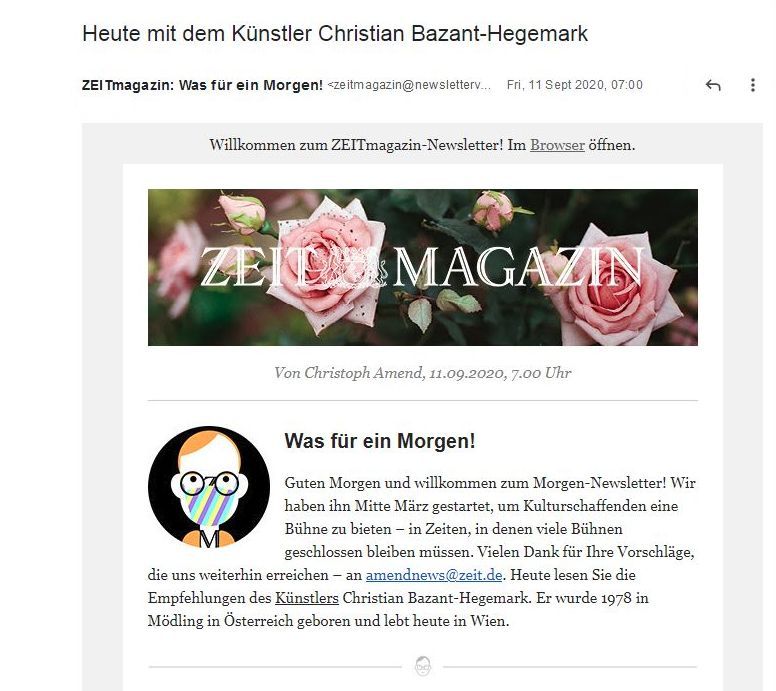
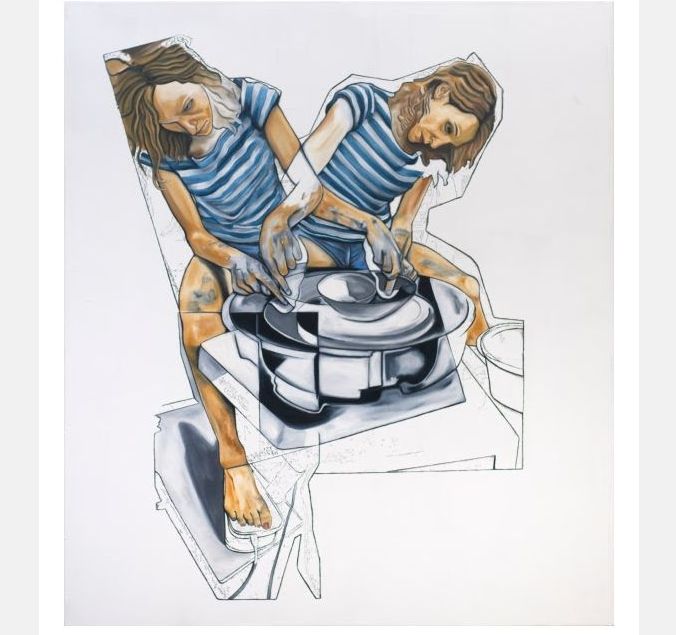
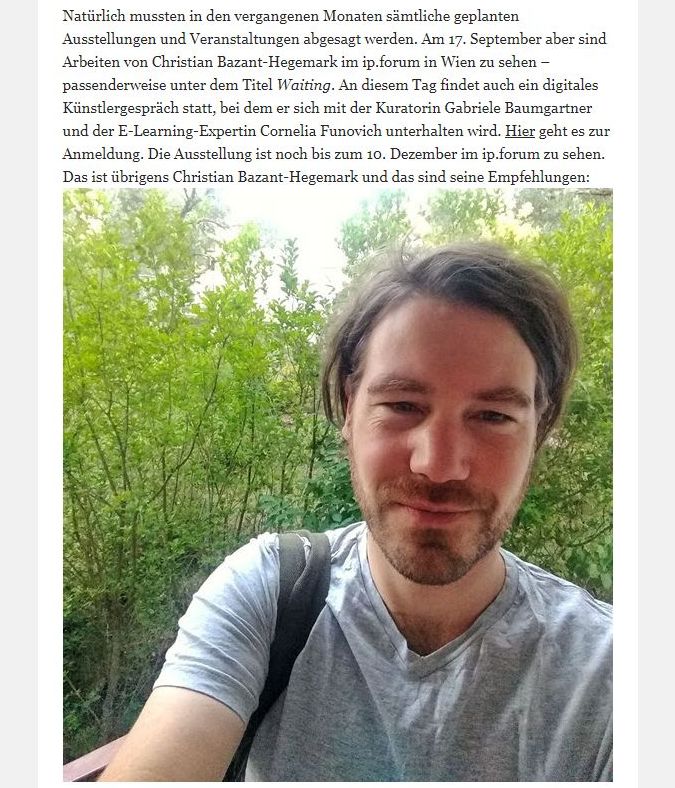
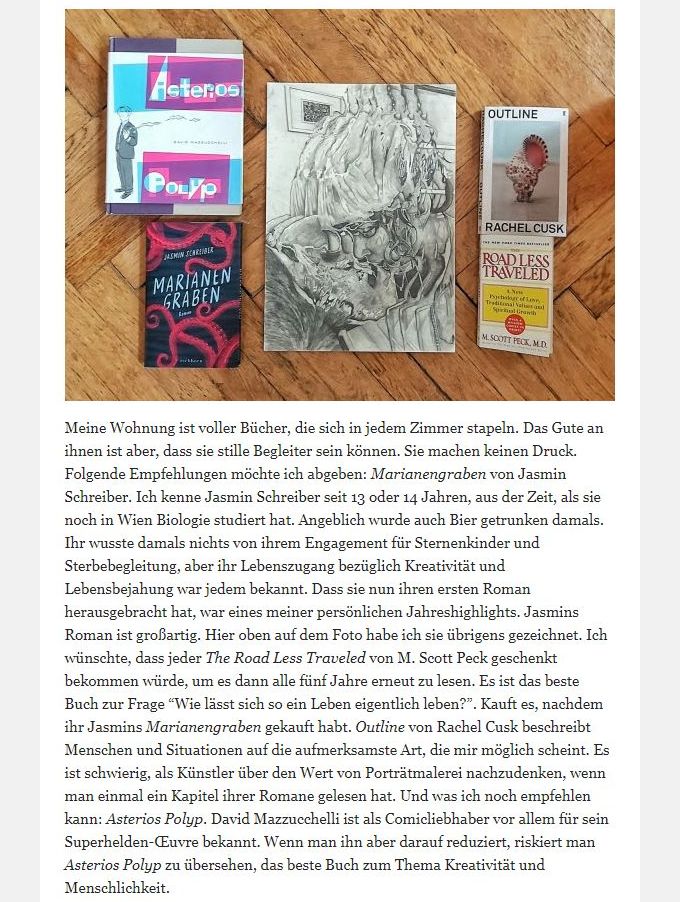

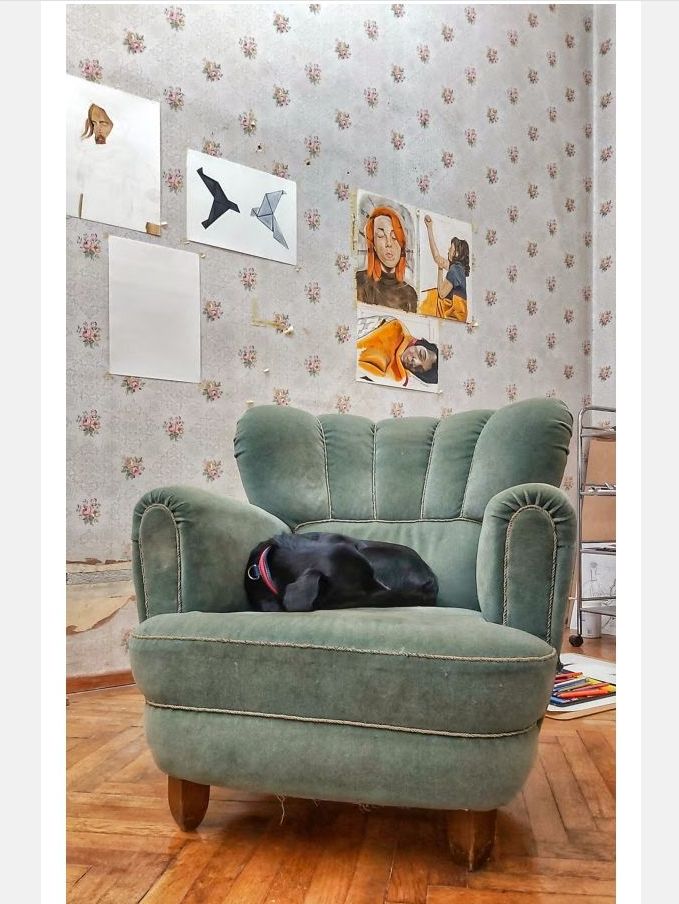
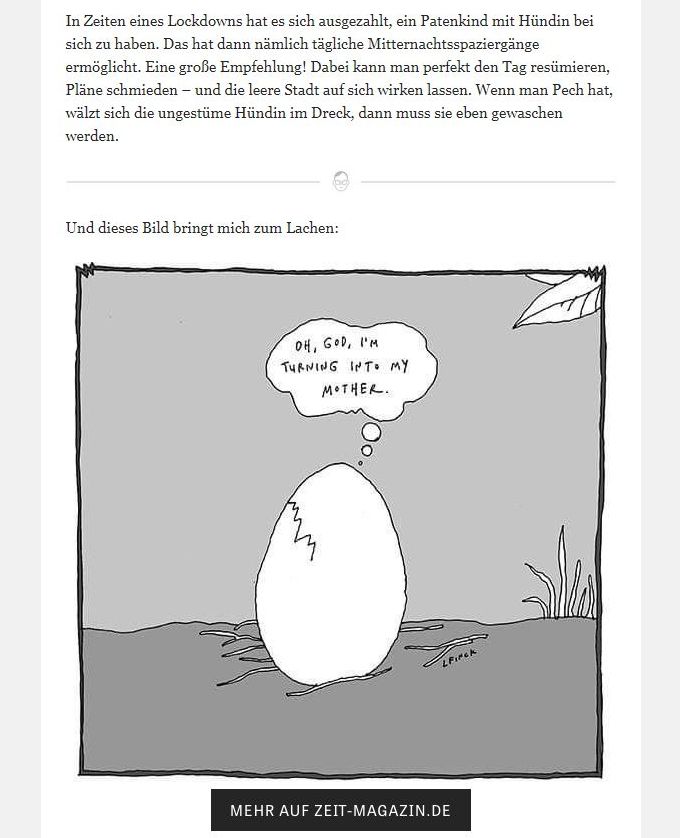

The State of Lower Austria bought my work “Equilibrium” in 2014. The piece was part of the exhibition “Ich bin alles zugleich – Selbstdarstellung von Schiele bis heute” at Landesgalerie Niederösterreich, which ran from Mai 2019 to August 2020. During the exhibition, Jaqueline Scheiber/minusgold was commissioned to write about some of the exhibited works. Here’s her text.
A selection of works from my Waiting-series was featured in the “For The Immortal” issue of Nektr magazine.
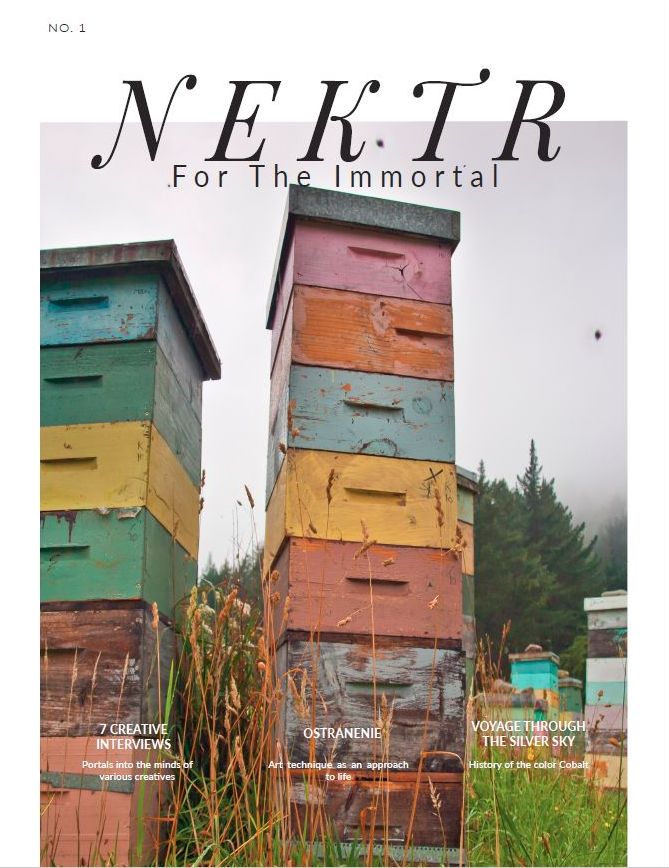
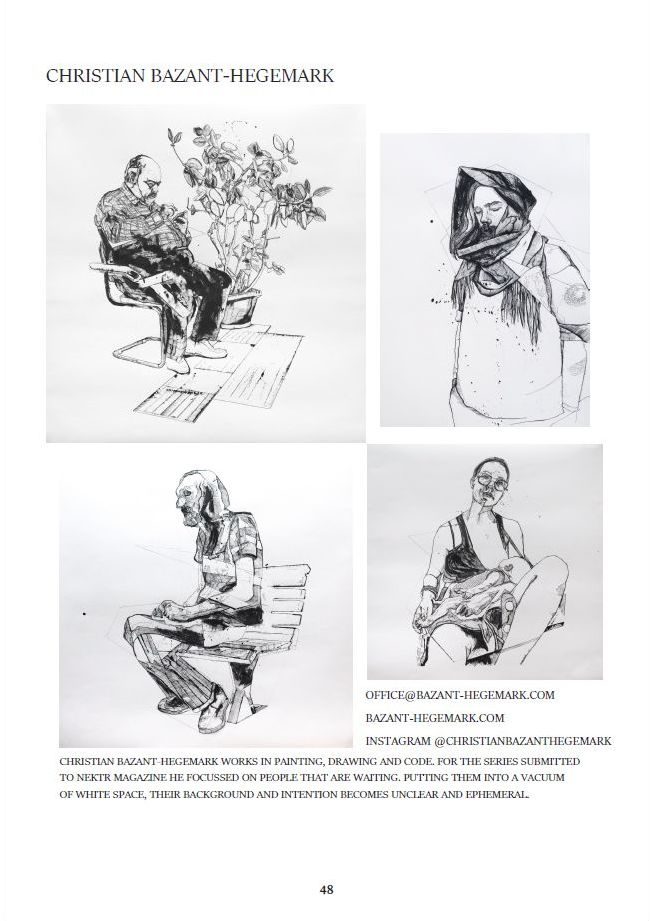
During the Corona lockdown in 2020, Markus Greussing produced a feature titled “Waiting – A Forgotten Art” for Austria’s national television (ORF).
The idea was to feature several individuals and their thoughts on the lockdown — but with the lockdown ending quicker than expected, a ninety minute show was cut down to 10 minutes.
The cut-down feature was published on May 25th 2020, and included some of my work and thoughts:
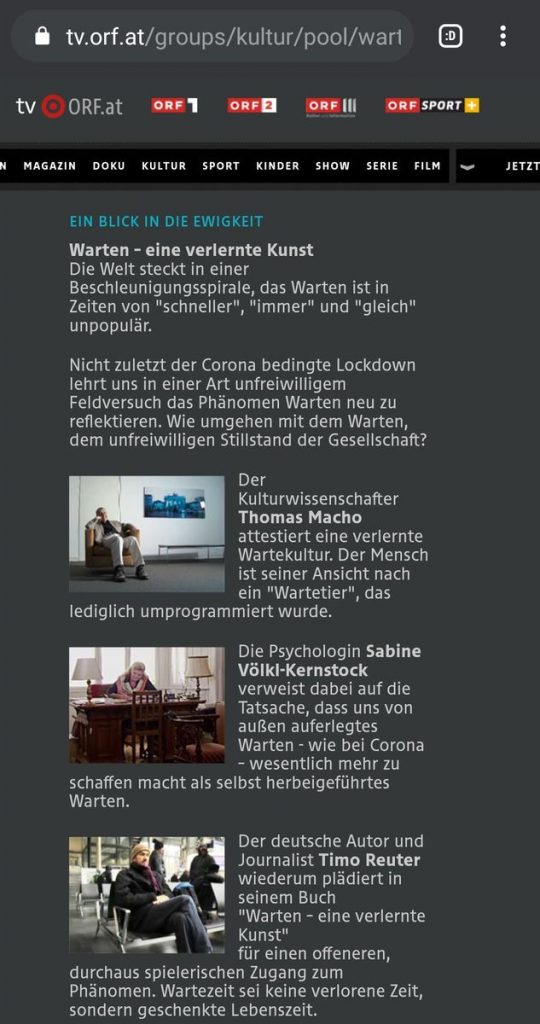

The state of Lower Austria commissioned several artists to create a video work on their lockdown situation.
This is the work I created; it shows paintings created since the Corona lockdown began, mixed with a piano improvisation recorded on January 26, 2020.
In March 2020, art magazine Parnass featured some studio glimpses. Here’s the link to the original article — enjoy! <3

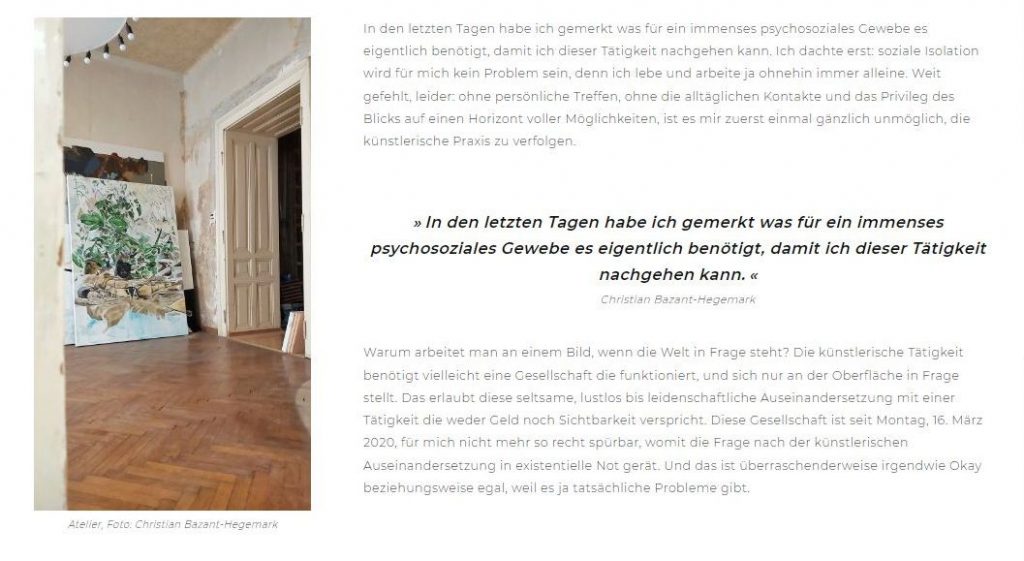
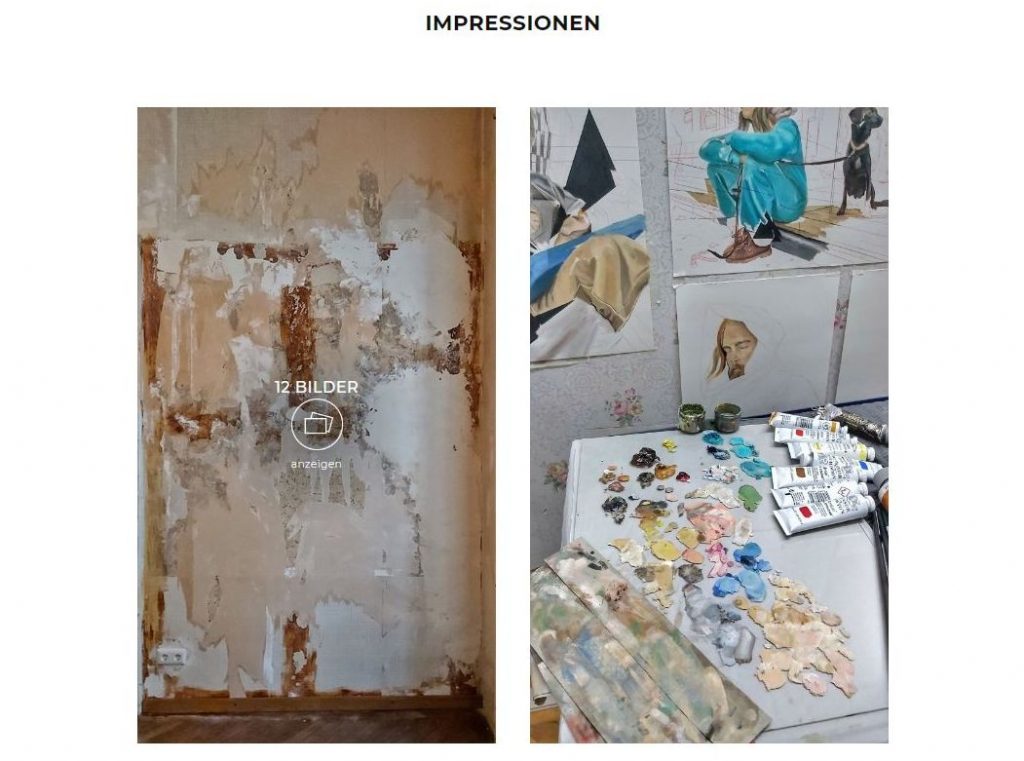
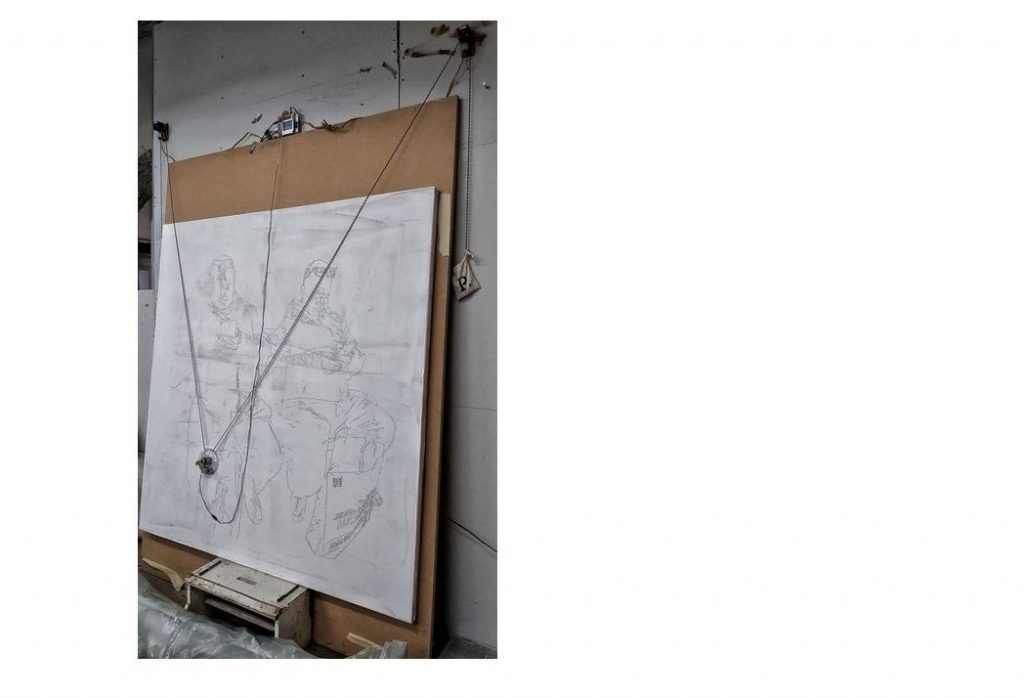

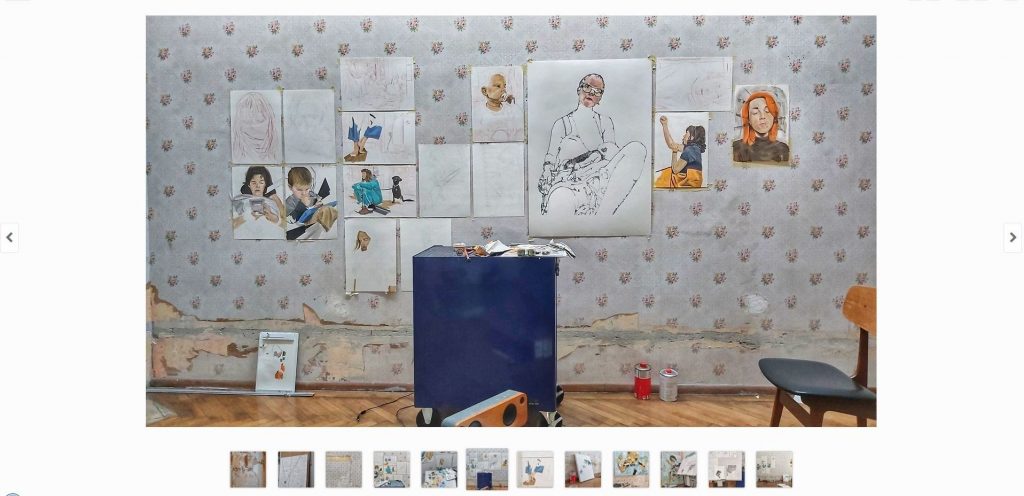
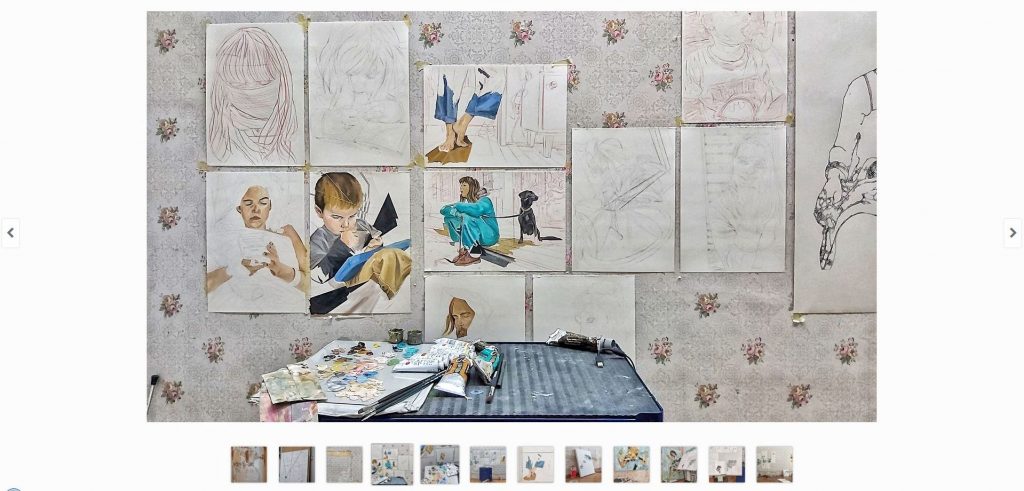

In 2018 I was approached by Wizz Magazine to show some much-loved parts of Vienna. Here are some screenshots 😉

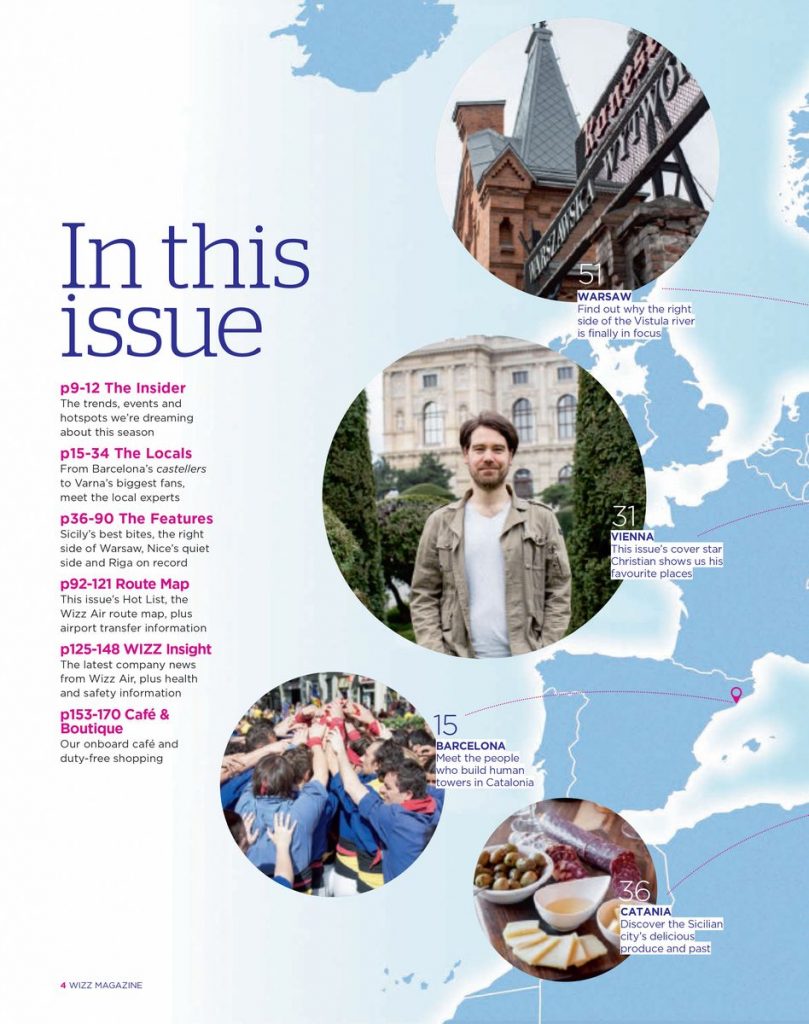
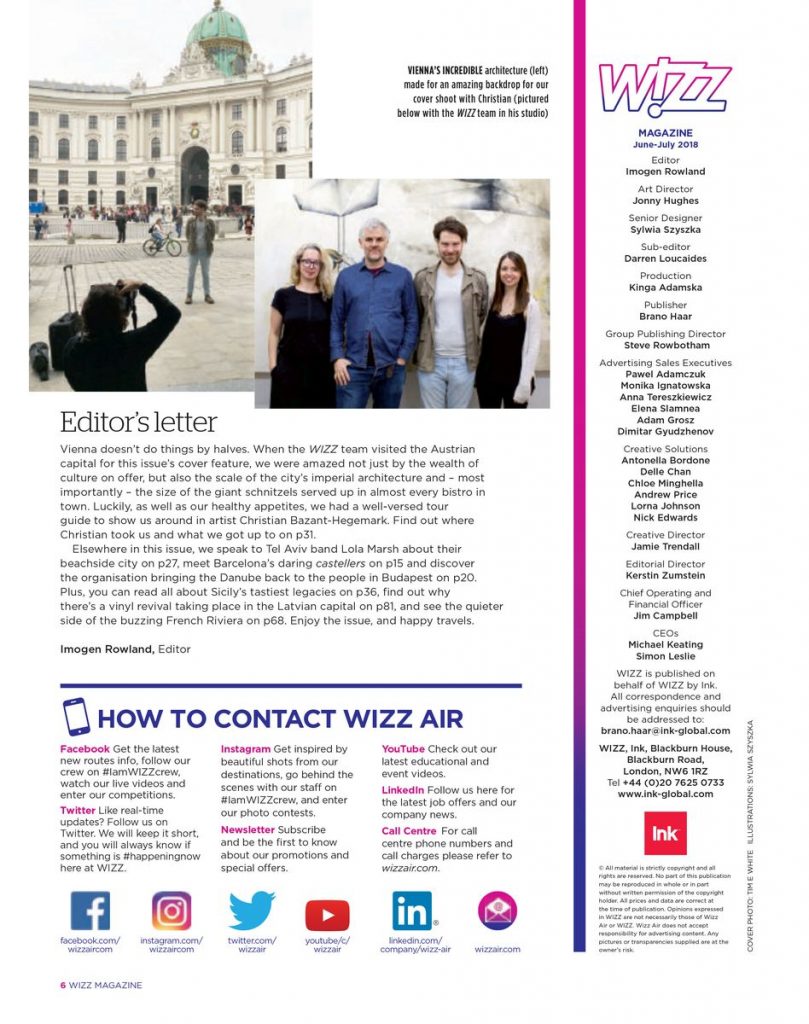

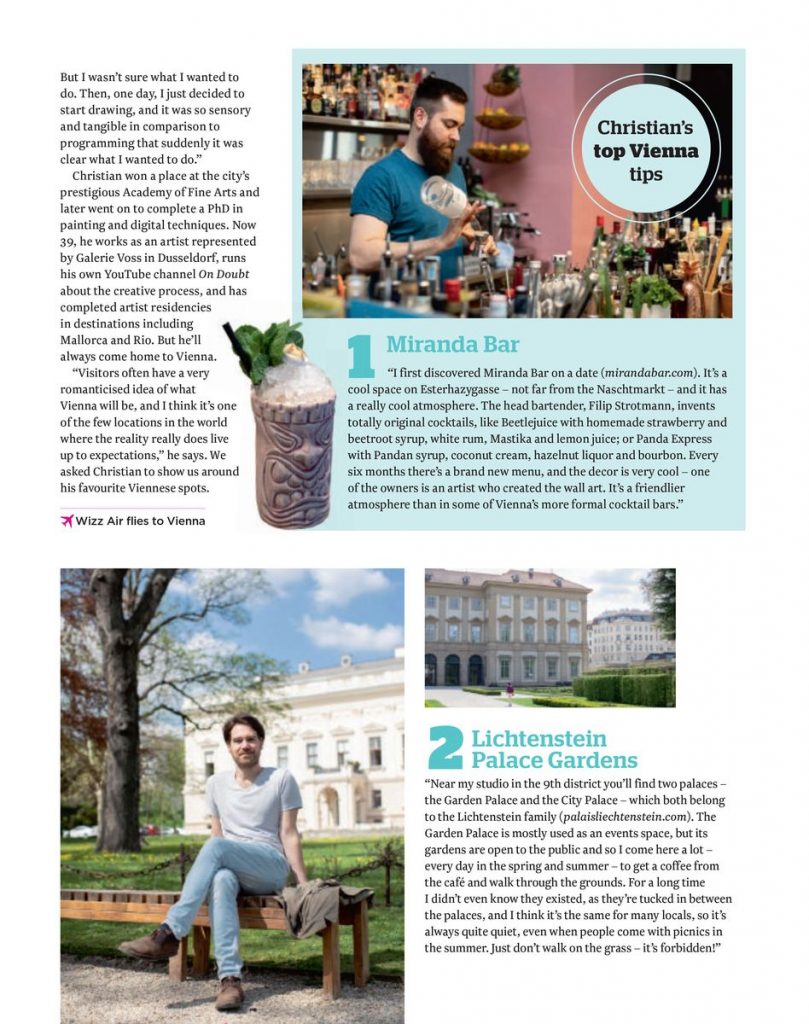
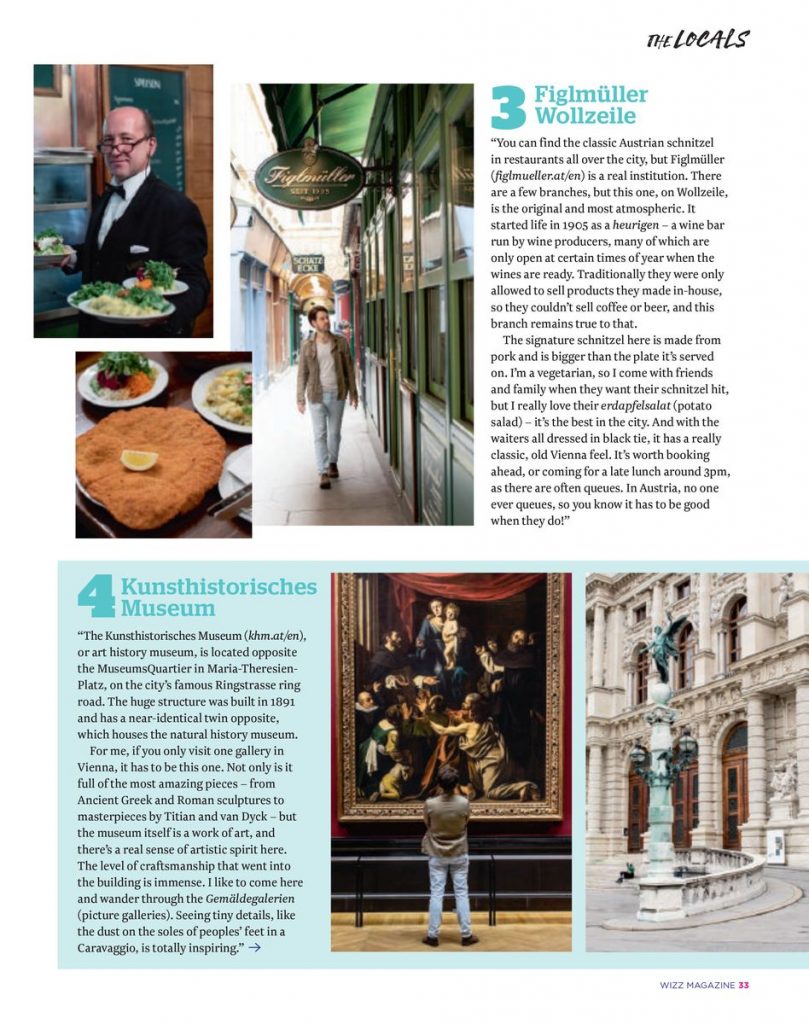
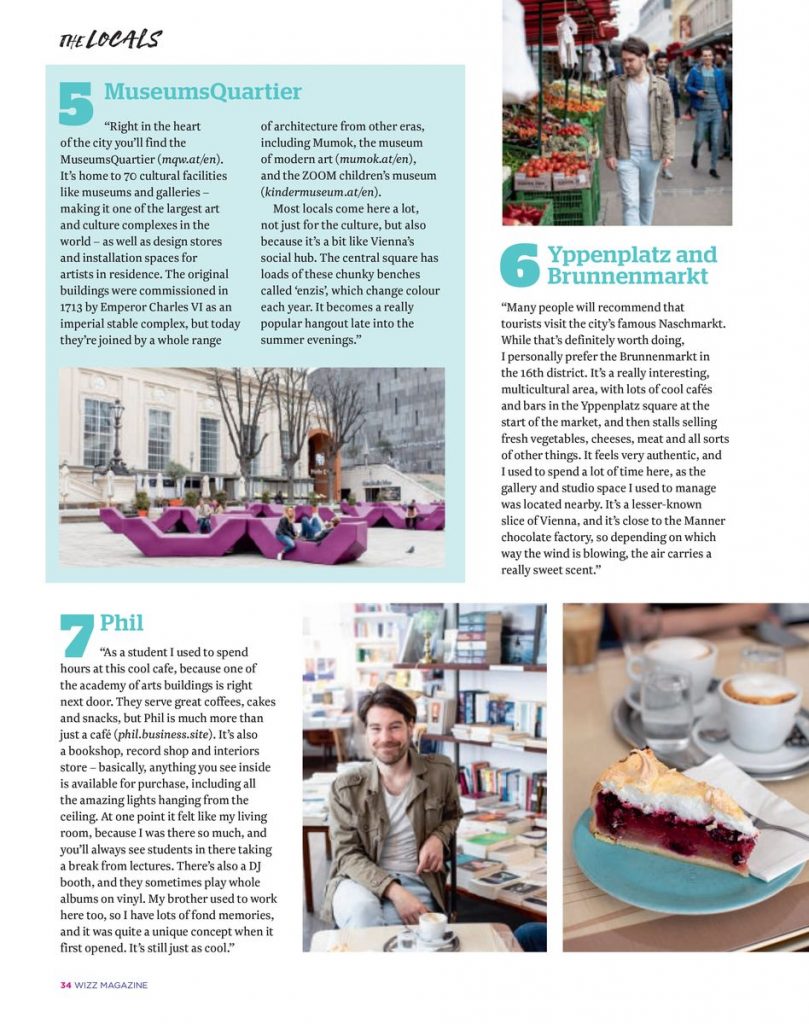
I was ranked place 30 on Trend Magazine’s “Artist Ranking” =)
Rainer Sigl interviewed me for my curatorial work and thoughts on videogames, on occasion of the exhibition “Viennese Videogame Aesthetics”.
Read the full article here.

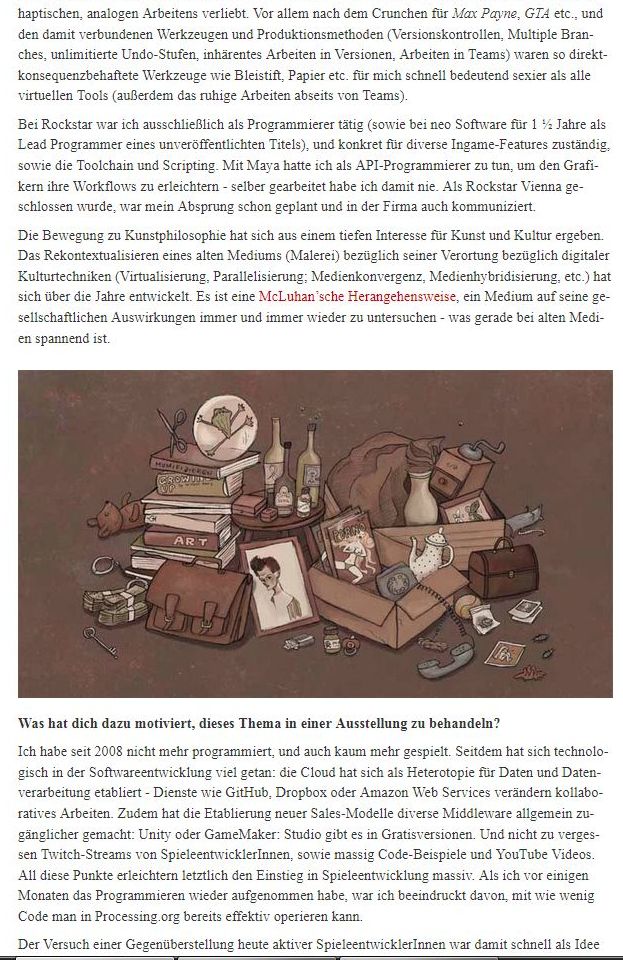
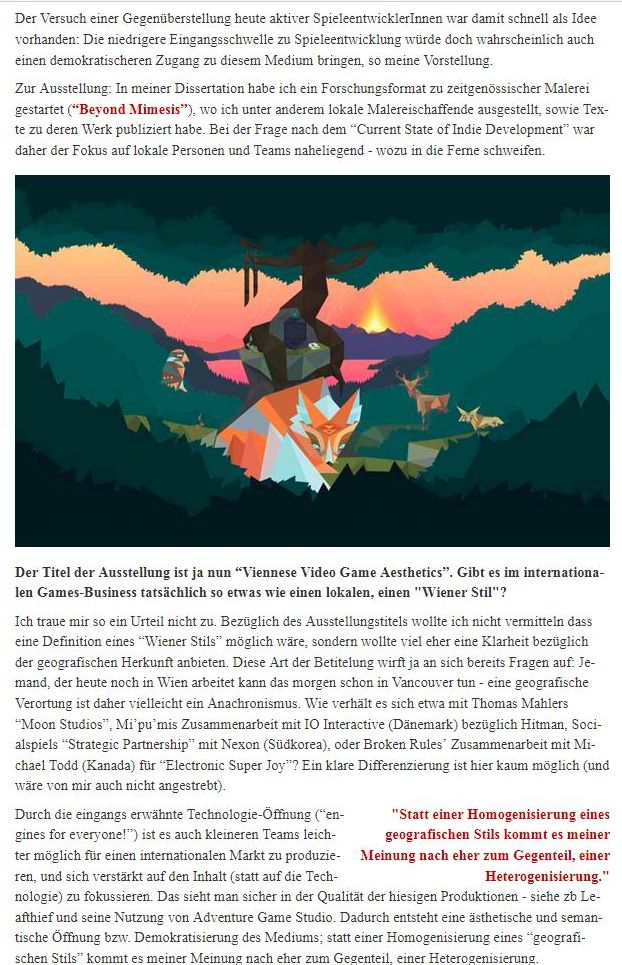
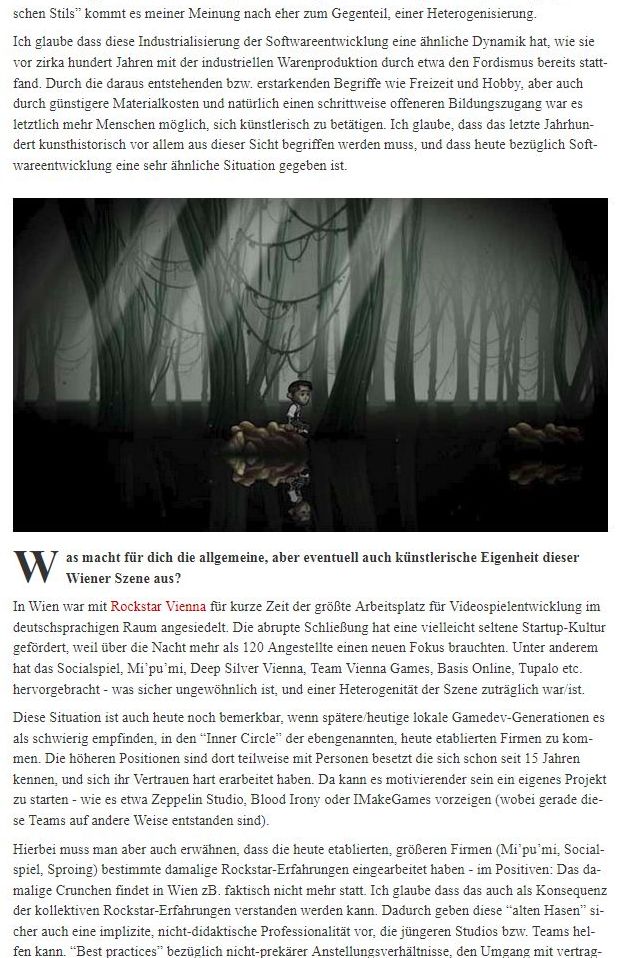
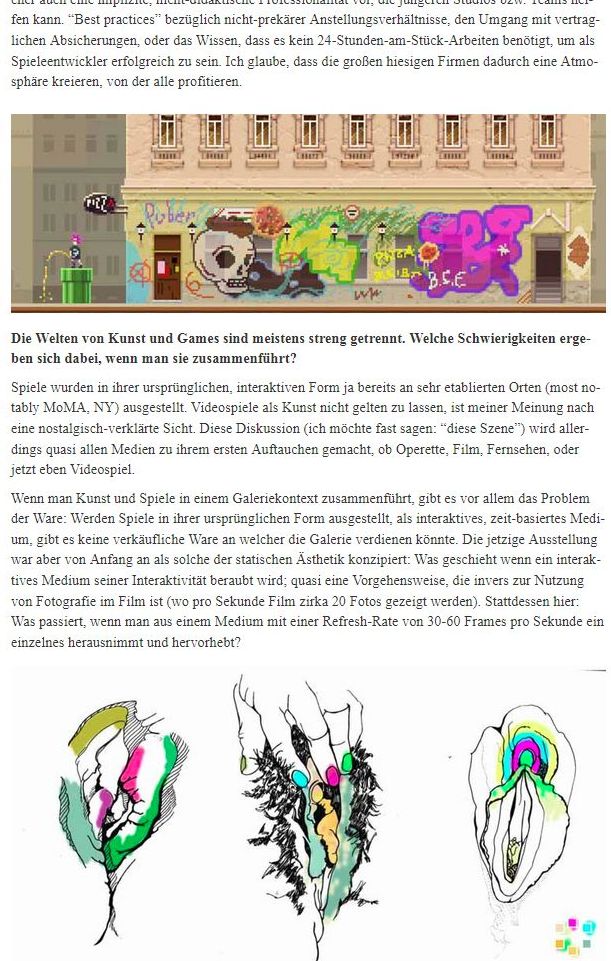
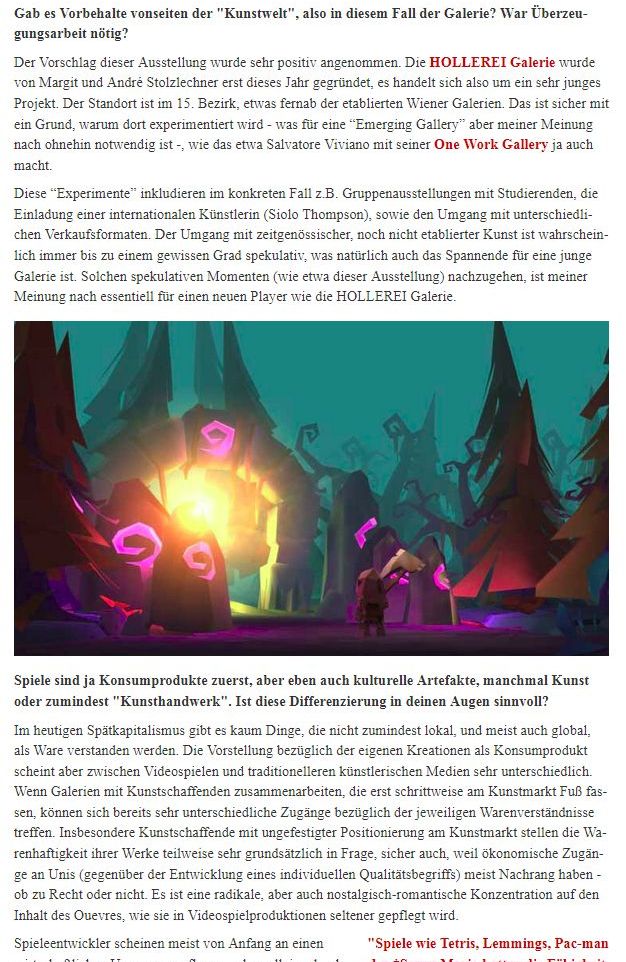
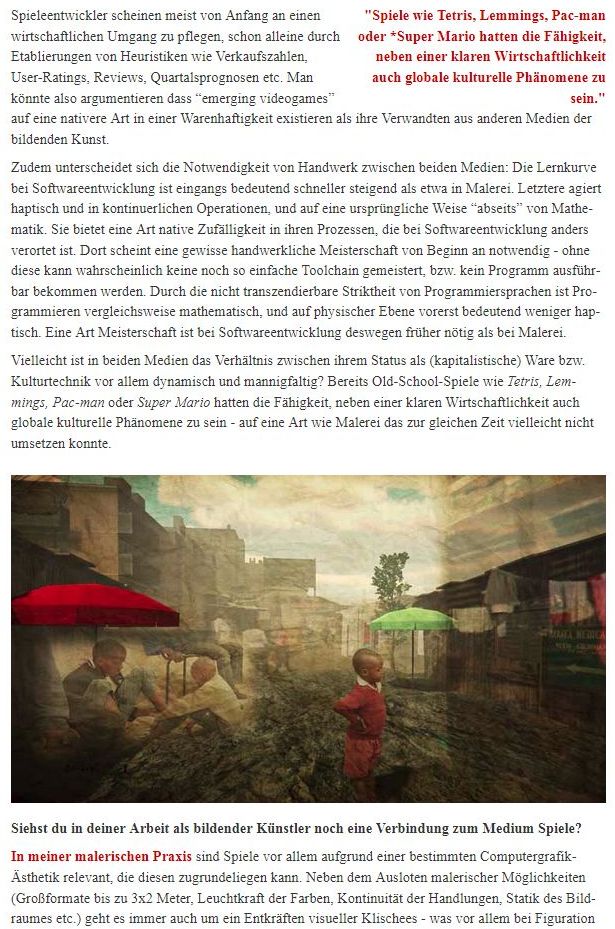
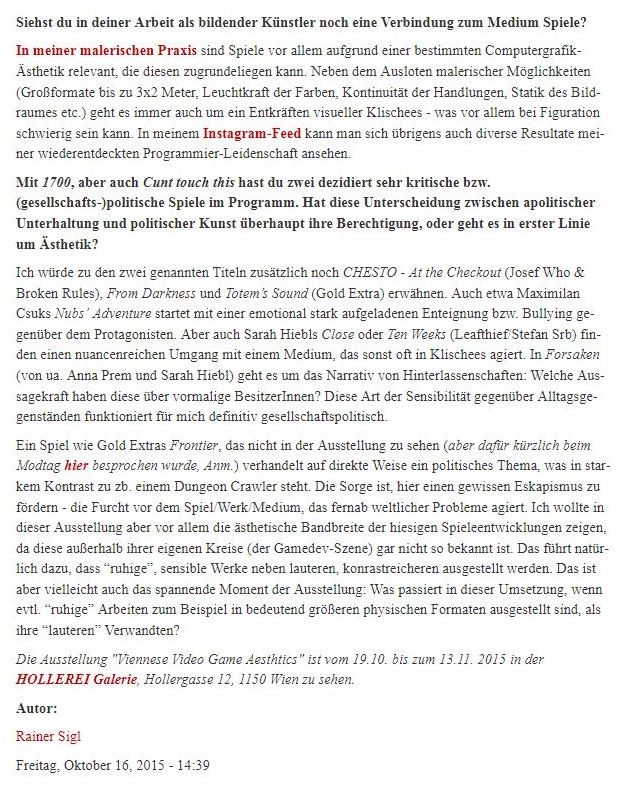
In 2015 I curated a group exhibition about videogame aesthetics. Here are links to publications from various news outlets:
“Video games are gradually embraced as contemporary artistic medium, especially known for their interactivity. Uniting a variety of media like music, sound, game and level design, they often feature strong visual aesthetics. While video games are already exhibited in their native interactive form in museums worldwide, their visual aesthetics have only been shown when focussing their production art, or when used as marketing medium. Focussing static still frames of games in the context of gallery exhibitions apparently hasn’t been established.
With Vienna being home to a diverse group of video game studios (from one-person-operations up to a team of hundred people), the HOLLEREI Galerie is pleased to invite you to its upcoming autumn exhibition, “Viennese Video Game Aesthetics” – with exhibitors including Anna Prem, Blood Irony, Broken Rules, Causa Creations, Gold Extra, IMakeGames (Maximilian Csuk), Leafthief (Stefan Srb), Michael Hackl, Mi’pu’mi, Sabine Harrer, Sarah Hiebl, Philipp Seifried, Socialspiel, Josef Who & Broken Rules, Zeppelin Studio.
The show, curated by Christian Bazant-Hegemark, exhibits a selection of still frames from local video game productions, printed in museum quality in small collector’s editions (1 + 3AP). This extends the view on the medium, which usually updates its content 30-60 times per second: detached from its other medial influences, its visual aesthetics are heightened, allowing for specific in-game moments to be viewed statically – as viewers are used from paintings, drawings, etchings or photography.”
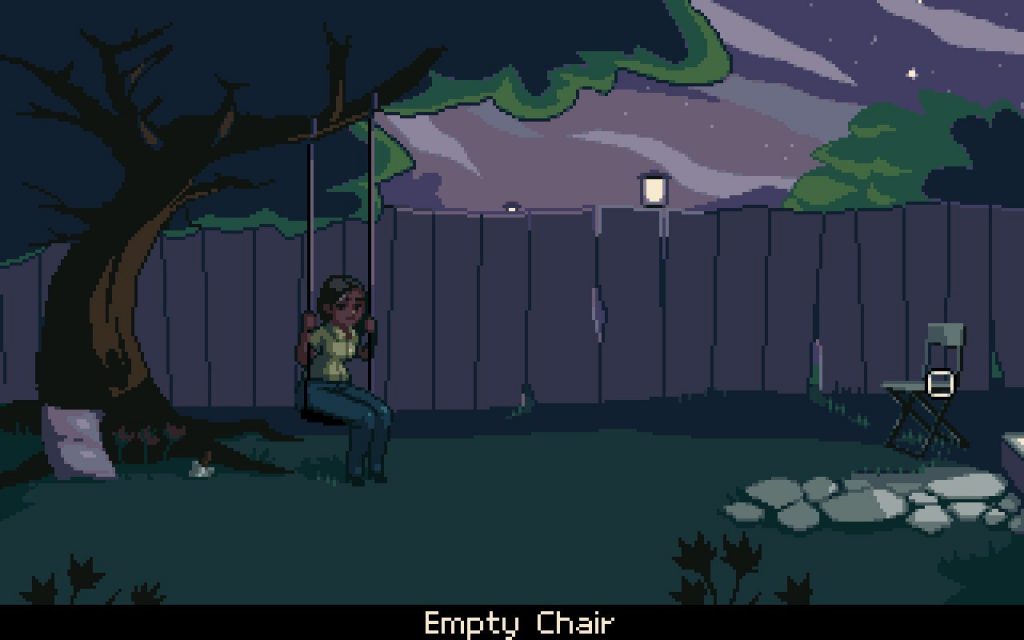
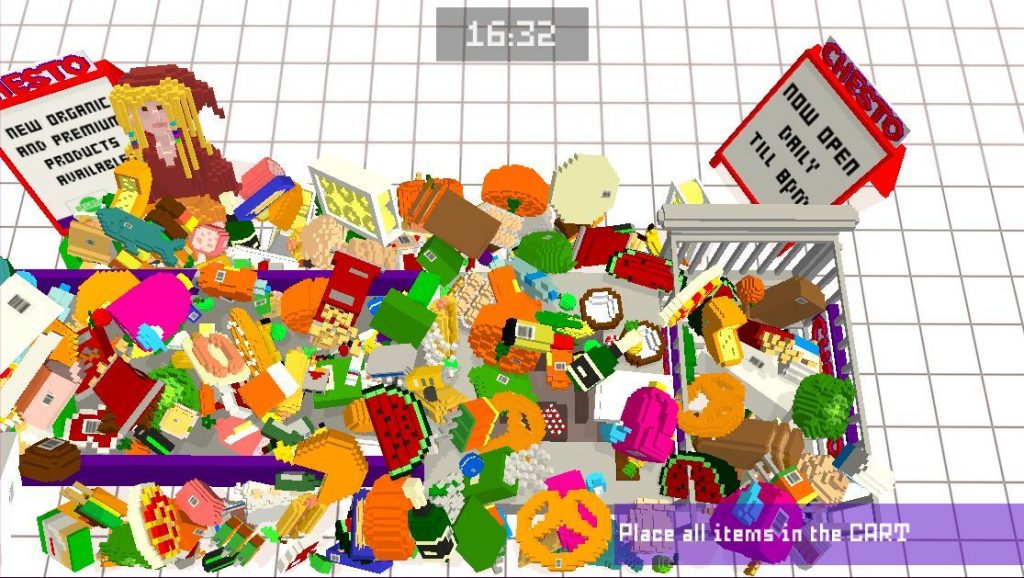
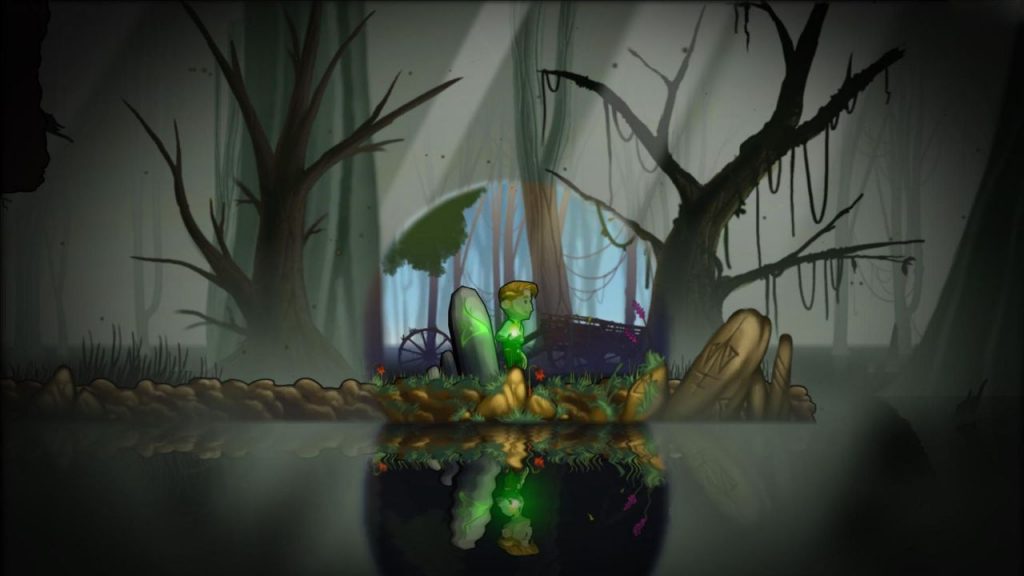
In 2015 I was asked by Vienna’s tourism agency whether I’d be up to show some of the cities’ highlights for a video they’d produce.
We spent two days together to create the following video, which has been watched over 80k times. Enjoy!
Teresa Schaur-Wünsch wrote an article for national newspaper “Die Presse”, about the transmedial art space “mo.ë” that I co-managed from 2011-2015.
In 2014 I was interviewed about my involvement in the transmedial art space “mo.ë”, which I co-organized from 2011-2015 (more details about my experience here).
Here’s the link to the full interview, including Alex Felch, who was the artistic directer — and our only employee.
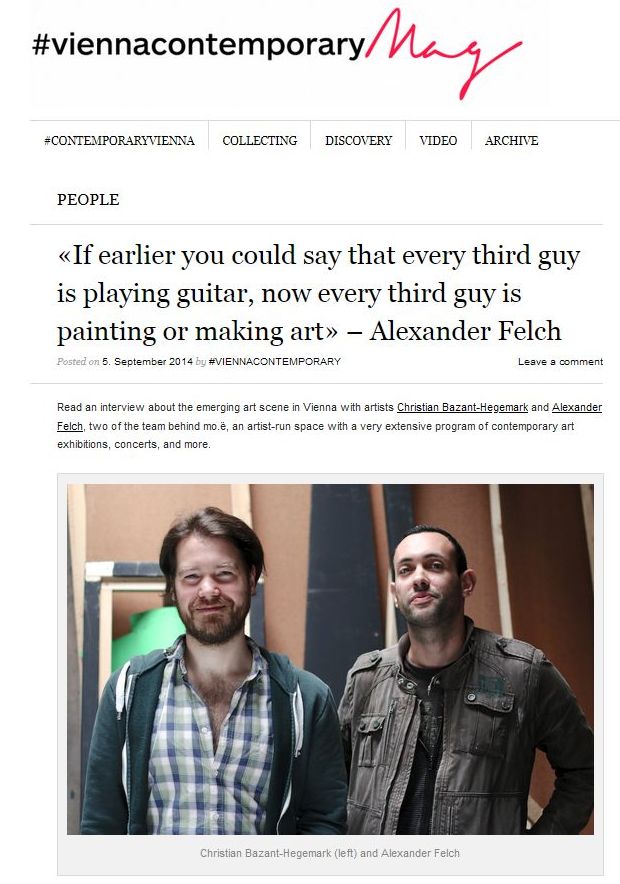
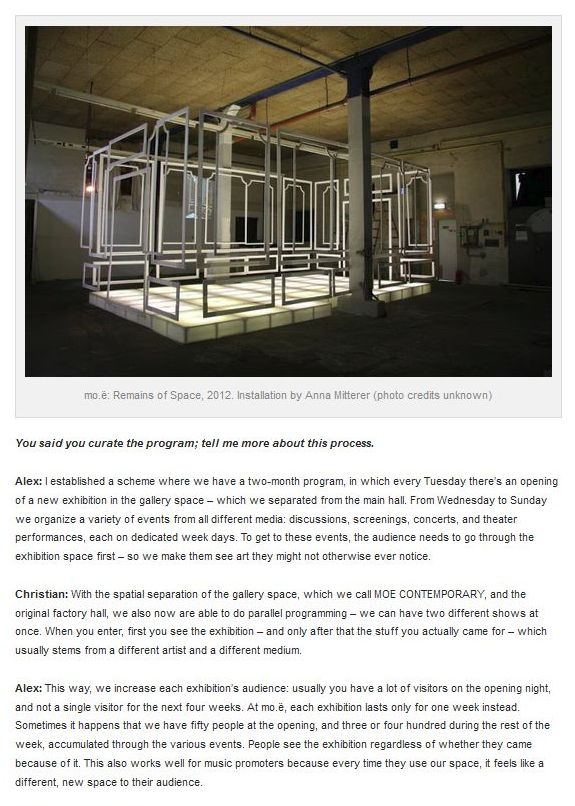
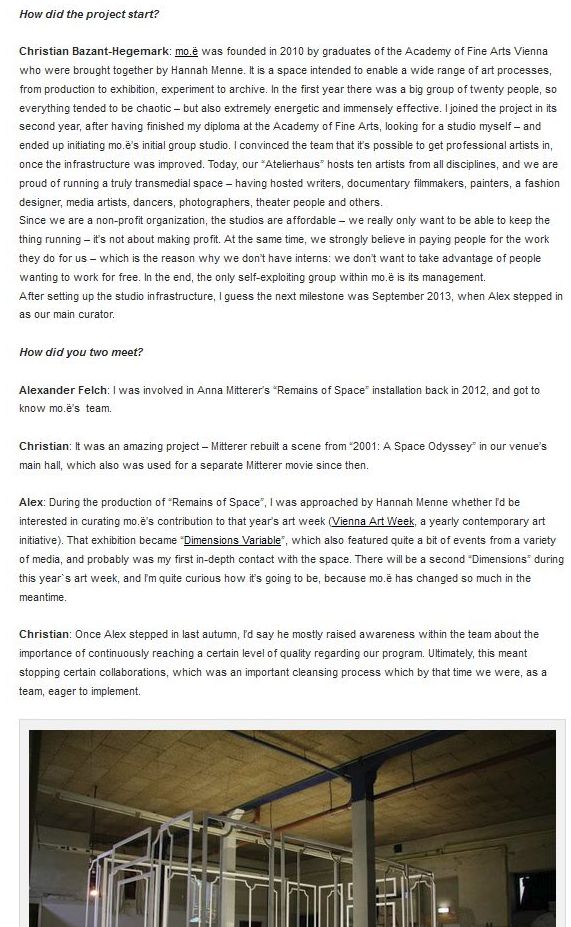
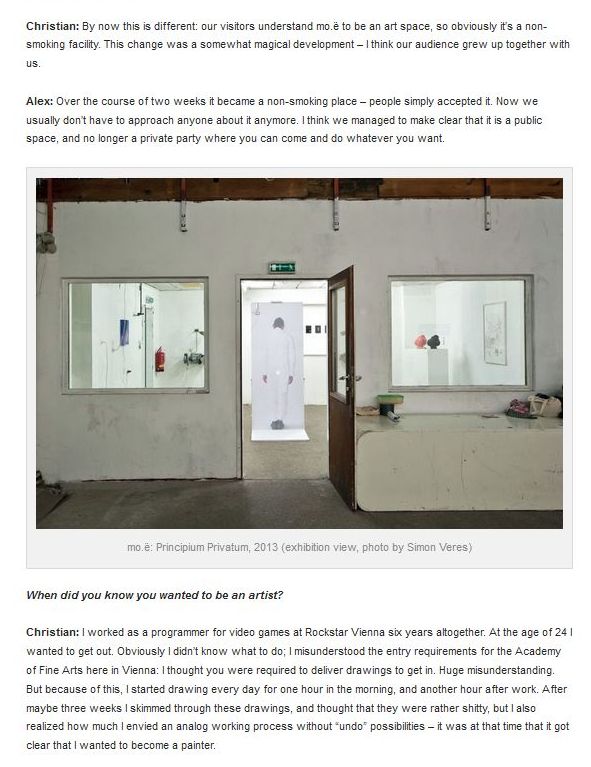
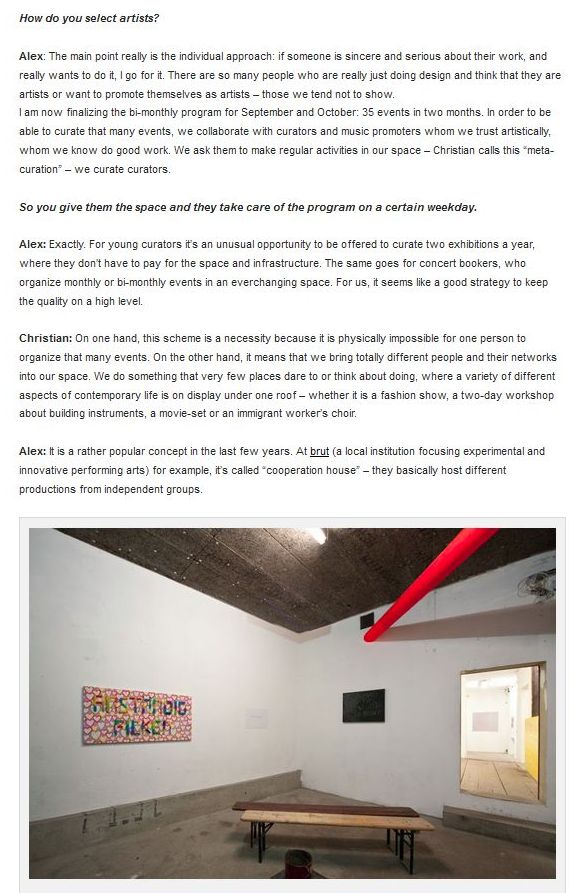
Wiener Zeitung published a text about the transmedial art space “mo.ë” that I co-managed from 2011-2015, and where a lot of my curating happened (I started curating before my PhD research, and expanded it with texts about the artists and their works, as well as public discussion formats — within the Beyond Mimesis project).
In 2011 was asked by British Airways magazine to highlight some personal favorites of Vienna. =)
In May 2011, the New York Times published an article about Florian Staudinger’s Austrian estate, the “Hammerhaus”, which you can read here. The original article contained photos of all sorts of art works installed in the castle — one of them being my work “Equilibrium” (2010).
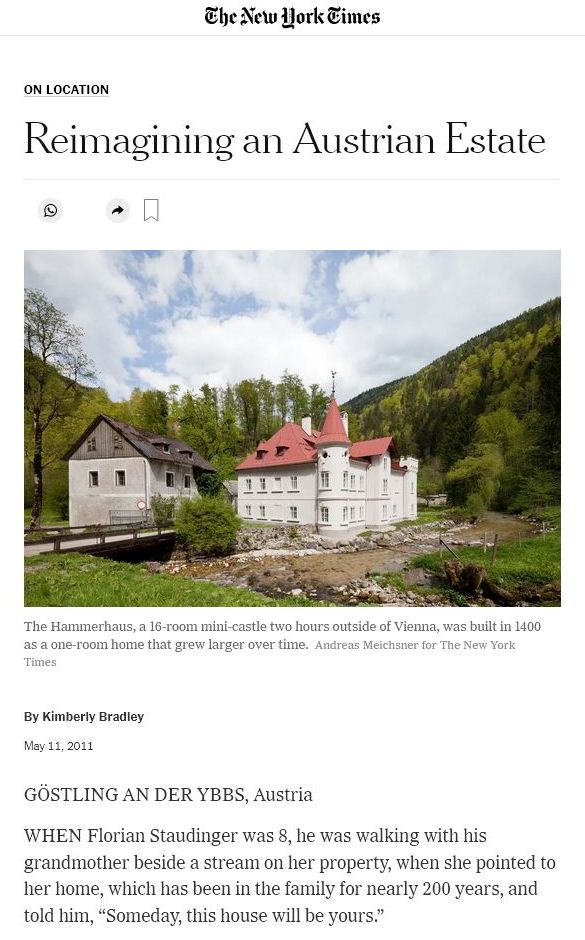
Ö1 published this text about my art studies back in 2010 (the text was republished in 2017, hence the date on their website).
